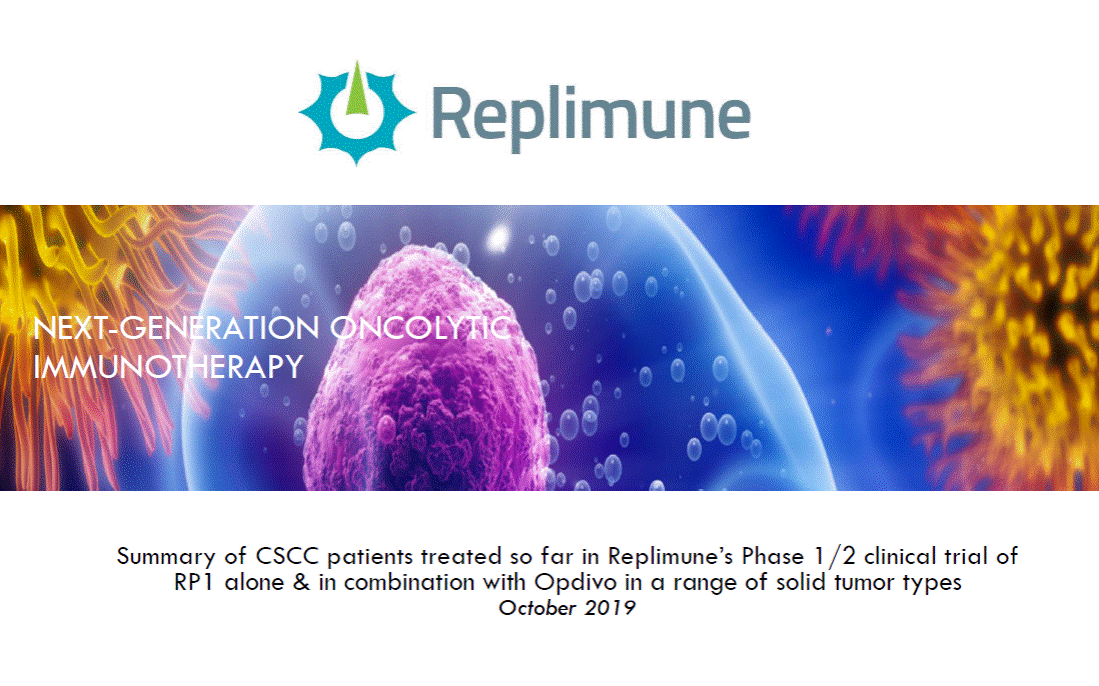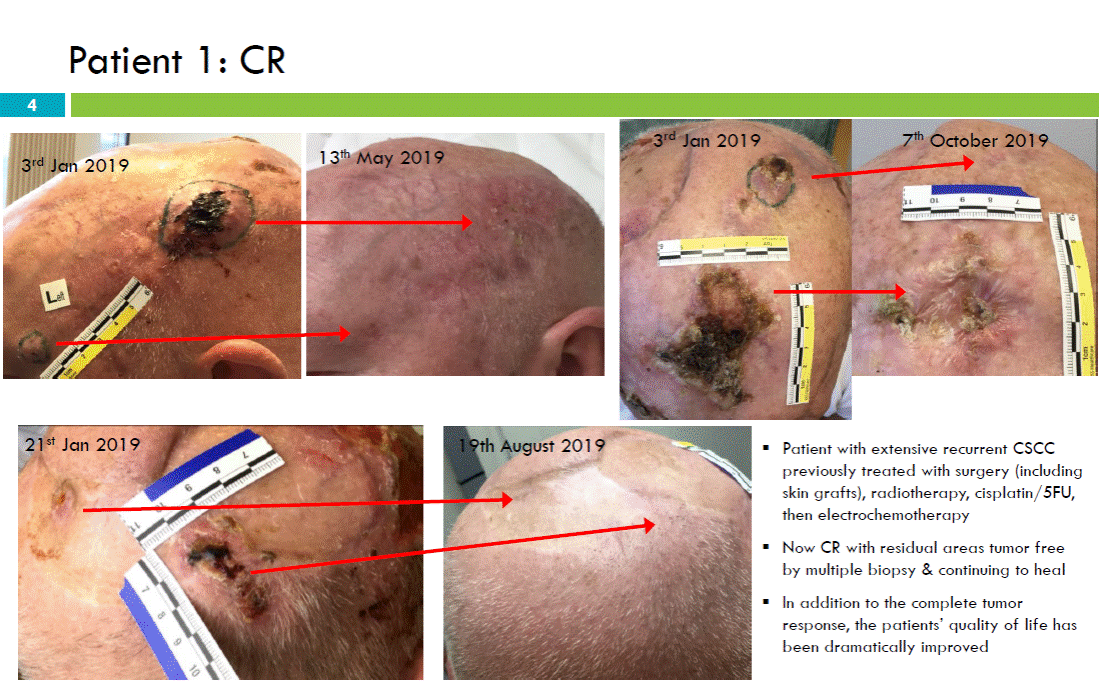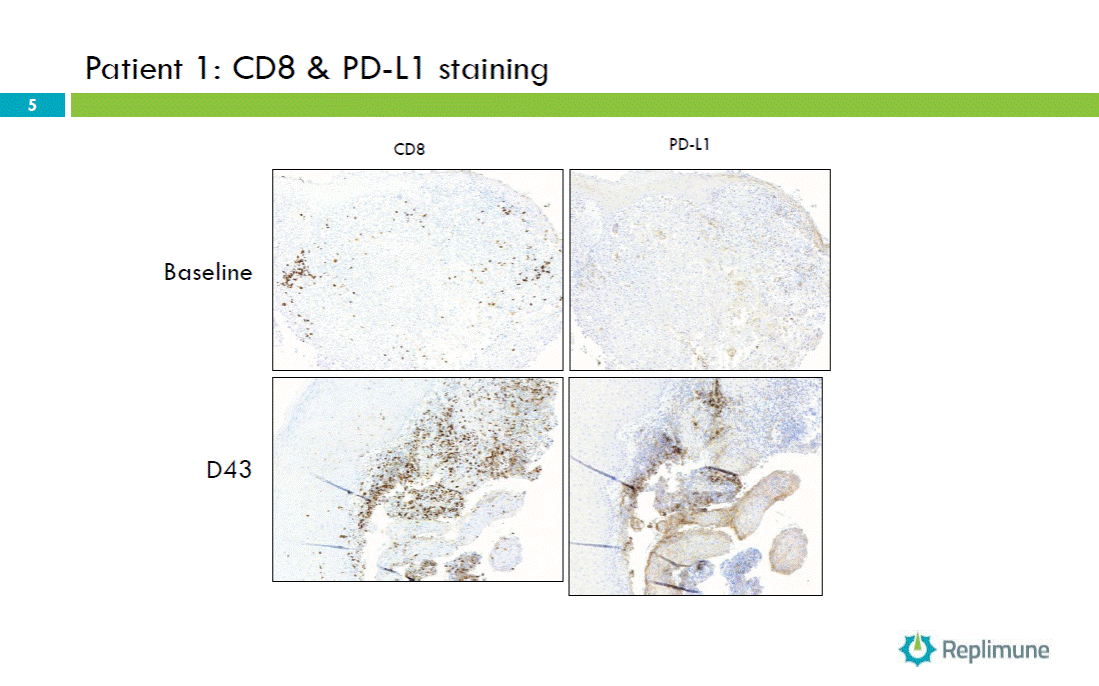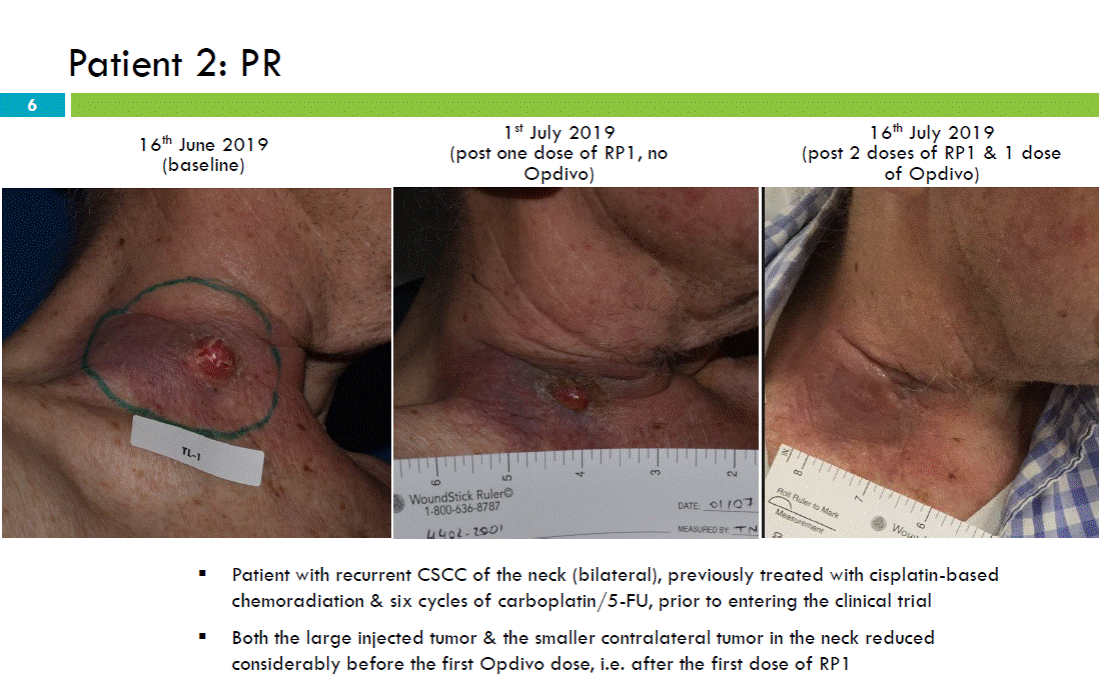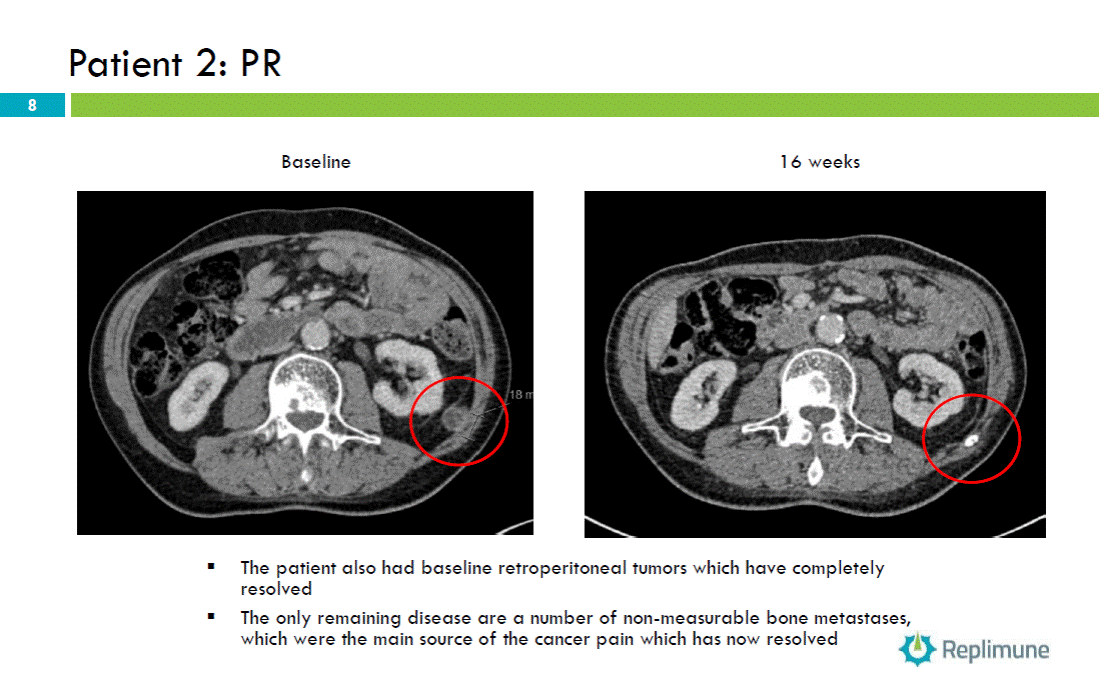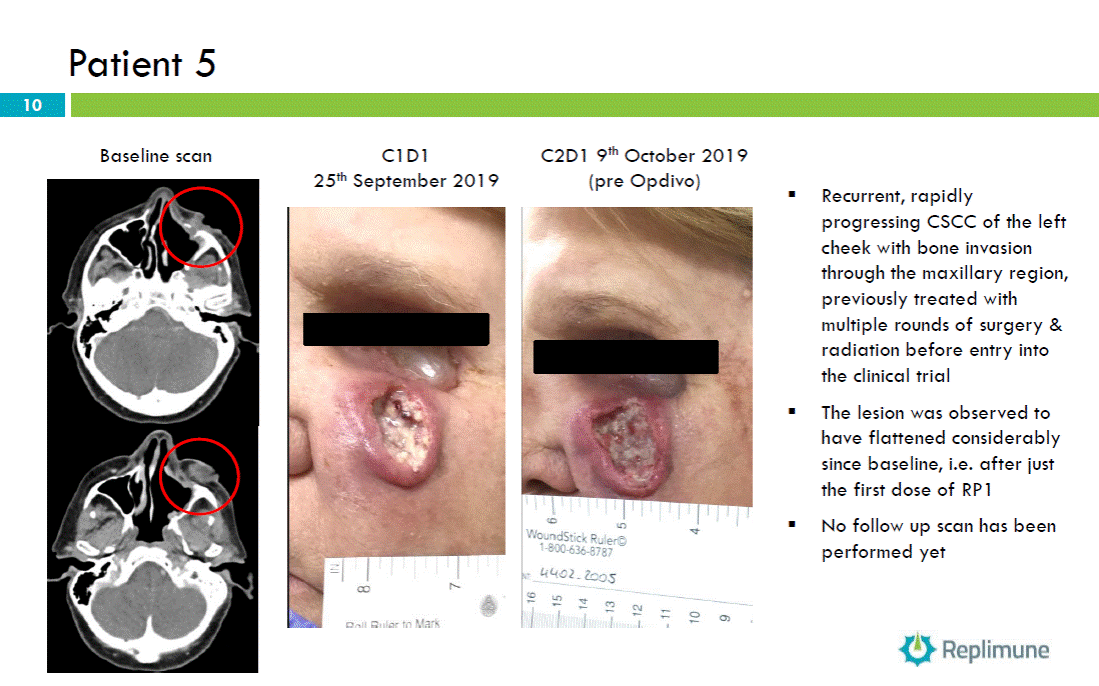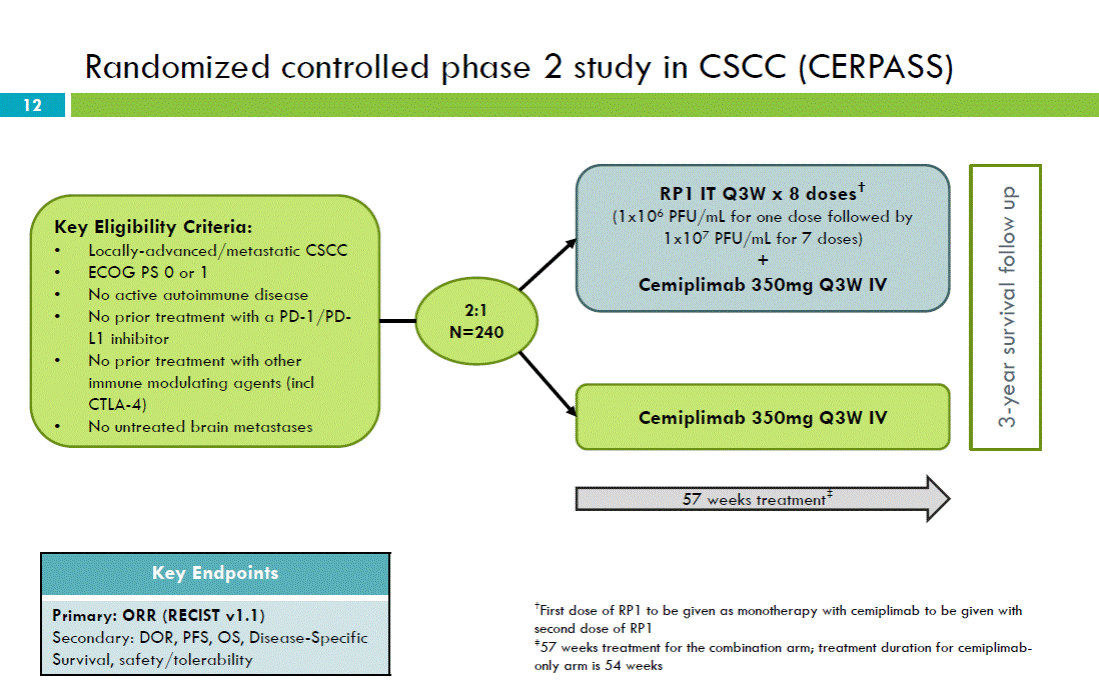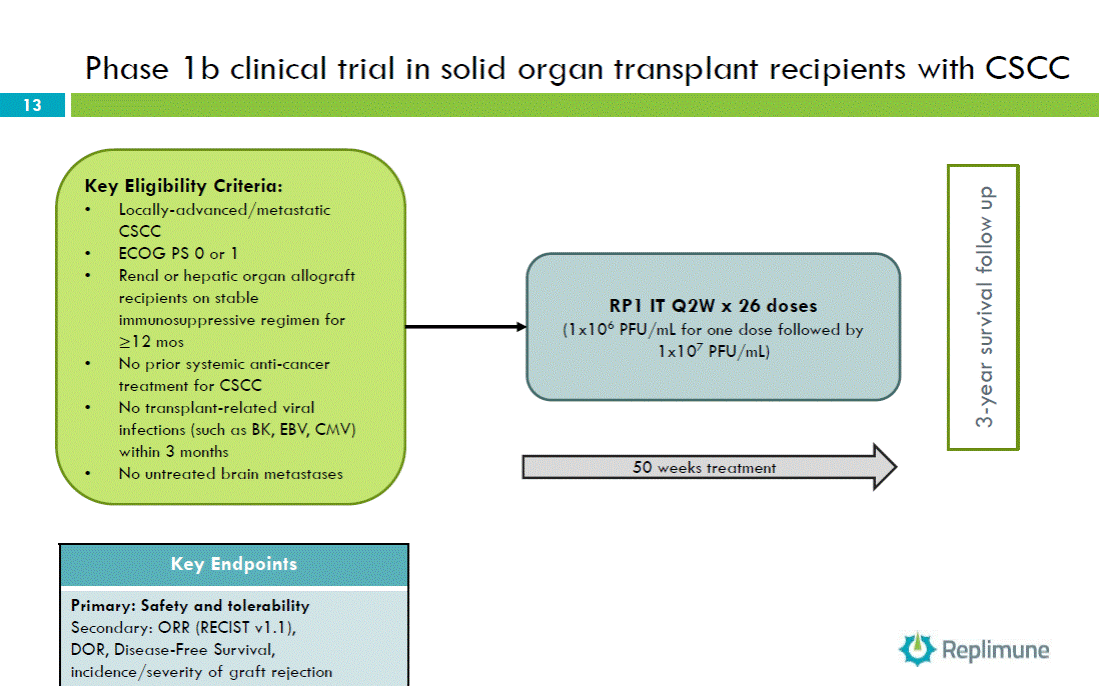2_31J*18:W+E911*
M08JNAJ@JP&T&(F?I4K9VI)B91:F7O 3H+9?Q2[;139$'16A"%;I0AKY&!0[T
M#9XBVC#L9"$Y""M/; ZV0A5R (.&NL[F&-6:).TH6.\;B"!/-*N2C J/SU';
M5P0$)M4DA8O'.AH8[<6V#4G-B3*"V7S:J1 JEJ5H)%H?]:"D'JW-L3-)^UH6
MJQ4-LGVE!/5XE([:PJ3[:#,J4GLA >1F4*6LC%)@B@I7[D4$-XB%K V%:USE
M.E>ZTC43JI@3!"-W)]]P06=E0IC%VA'*/6%'8UGX8$E= Y6=W&@A_VZ(E59^
M."D!+5-9M#25[1[RUL]4KUS\F -*P$D]J241,8^ZYC,)P+S!F,-IPSJ;6:Z%
MEG0!"G_Q,H@;A(:ZP9Q%(2D["G.6$B\CD24I84-?,L.U(;^D2HCH4I>2[*99
M]ODV)OBI9UVUNUWN=M>[!*P';QSW24G^!I(@U&)L2@FSARKL4 R+Z#P\%UF1
M5>V(EF**UHK(2HD(!4M9PTRQ.'09@=SP9:O)#<\4Y),E&I$K I+6TJ)&)*?A
MD2)<8 I<+#RD+@U+@$_2QX_^!IHZMF>(8]P159ME%$=IIIEK=&(;QT5AAGPQ
M*_6 4X7LF!*DS18F7PK9=X4\9"(7V&BW; ;
M5_UK,WW,3;A$8HR$B28J@11UQOJ#YH=O"I>@&?1YQ=N21E",%14[#5U)VA #
M2[RVX*XD1%\C0+O_J9>3-18%;Q)I;'HF#0 1C"9BIR>-*P#QWZD;\%E/9FXA!)-$:N<66GLEQT]\08_Q[;
M"^LAN9&?=/;(MKZ\L>Q&RJY62\P4:/L= &2O%60Y;W?J5]_ZUV^-W]LKG+YIV"+EB]D)E!MCU/."75-41JGT"T_OTB@8N:X7.EHLL
M13H'B_B1E12Y$=7+ER +D6+H
M-=FHBQ8RF=#S#!.R,R[)&? '^.;E+P A!*(AO\#"0 IXP*2Z B/< -S$,#J
MB9<8V))%2,-HT! 0>I(2Z JBP C]<"QUFF@AZF =X"+GWJD)J#)-@N1<&407 CQ^X 8N@4<=C,<;4B(W"H"?(PH 9 M$9!ZK!EHTXP;9(HY& CF 1&JN2/*GD)26N49?3)GP3*ABJI>N ;"C"
M3LH@O8,D[WA$\9,8-/HXCMF8[KN.>:"@VJ"W2^&2IOJ[INF2@A FDYN*#+.9
M&%/%E-DAH'&1W @'V"E O:"2^ZB9^S"'&**>I2%ZVSE]%"&[#+&CS#-\*LE>?\H[(3NW5Q&HV P1A4$H:X
MQ%;\$V0BMEK)2P*) 2FY3]8TT -%T']Q31.1#F[<*RML-8ORPWMZE./:D2>;
M#P<:0KWJ38;!LN 4&9+IHD"*122AGWS*(@P%L1F(DCW"E_=,Q)]@P,DCMMAY
MSDQ1-K=BP#Q#Q;7:,/JPDJ;0)AX-4,$,%-NS%QO[M;(8S^9++X3!K!Q\S[5Q
MSKWX1*4 HGL)"_JR30Z[%ZGZE*7(/%'I&S3S TX,[V;,0E[R2'\V*P3X<0MB;= >S3WNQ1B*2ENBC=_3"?Y
M.)B)',V!VJVGLA'GZBI2ZHN2H13'%) OP4%W.AMDZR-Y0Y(\$Q],T2Q0K39[
MS"QY0$I5>($'
MXCY7RX[N(XYY0"_8<#'SH%0Q_"NN:::_H!(J681H$S.ET+JX-)D"X]=EL(1H
M" '+#
M9]0K.K7"![U:Q[%+K.PO^6 +@P(=0=DO1LJJYR&)>AVHB%7#-GQ"YII(_2D0
M-91#1%09-2RB$M2BBKYI9&X1C6
M7G/-X(SI1FXUO /&82LK7^'M4(ZY#I "WTNJM")[X&/I61E6XB5FXM3\-8GY
M4U#RI*L%X/.52N+EX(X
MY>"D[,WSD^,("JD )JQ0:D,C'HN;NH^?D5$T!N1 %F15"RJ/NCA*DE, MI/R
MFF/?."Q=^R0?KL(ZSH(3EA@+_2ZV1,4?0<]!]N1/!F6[\A2\RH[@':QV@*1*
MSN+"HL*)VMV-J2AW[;Z.D0=ZL.5;[B!HC"1X<#+PX$@A,Z%289'E#.5B-N9C
M1J19X8U3Y@Z]?5V0<: 2Z*#Q>E#-$=^]8]?C@ =]>(%Z\&:L(EU;"X ,KN2(
M,3DC5HP;"IYI1>9V=N=W%AP54AANKAP49L"HA!QIU)-'EDKAZ"!Z+I:&HXN[
M>B3P.TSN"IG=:"*XR"EX=NB'ANC_-V%)O_"KN4 8L_"U)C0+6]/&;>S6""TL
M>-#A2NZ.B' @
M;81&6=;@XOCG(+A3U!B=EU:D8*71]6AHG(;JJ);JQ4KARFVF3'@!;0CJ.)7B
M4$HLR*WJ/E,62MNN\MBD5Y+$RZ#IJ6;KMF;K@_Y"/7W*K%I"[N9V[N>N*TR2,MB<
M4R(FC\^%[NS6[NW>KHVJD.HXX3#E[O$F[_*&*^,^;B^NM4PR[_9V[_9VHL^;I,6%,W>[P$G\ (_$X]:!GJ )^8V\ 9W\ <7
MG98.:PBG\ JW<-#@Z"(*[ OG\ XG\(2QRPWW\!$G'\1B7\1FG\1JW\1O'\1S7\1WG\1[W\1\'\B 7\B$G\B(W\B-'\B17\B5G
M\B9W\B>'\BB7\BFG\BJW\BO'\BS7\BWG\B[W\B\'\S 7\S$G\_\R-_,S1_,T
M5_,U9_,V=_,WA_,XE_,YI_,ZM_,[Q_,\U_,]Y_,^]_,_!_1 %_1!)_1"-_1#
M1_1$5_1%9_1&=_1'A_1(E_1)I_1*M_1+Q_1,U_1-Y_1.]_1/!W4NGX59X %2
MIP0>: 9*4/53IP12)W4>X(%B\($J* TV(-;WP,T((,"8 %>]W4R8(%B@/5A
MYP%#@ 59'X(AJ )E9X%>)X-G7W8?*(9B@ 5#L/9K-W9#F'8?&(("X/5F+X!G
M)X,JD %J+P9A0'<>$(9SIW8[X/5E]X,AD(%XKX)>+X!BD $9$(9RK_<"2(9D
MB(4H2(8HH()DH *"IX*$IP)K2'AK%$$B")# %7. &9I@!;J@#4UB$0\!Y)?B!
M'UB$.N-YGA^%11B%'UA:H5_:H[>$I64%2V %27#ZIX=Z28B&2IAZ*>!#/J1Z
MJ9>$-[CZ !" 1GF>7Y2R /A%8 3&%P@ M'^!M5][+F#[%WB#%W#[-^ "+J![
MN\?[-]![NI=[N-=[N_][NJ=["(" $G"'PC]\PR^!(S#\(W 'Q@>$(TA#0' '
MNX< O3?\PC\"-P"$&.A\-YB$&!#]T2?]TH\! Q!]U%?]TS]] U#]UV_]UY=]
MUZ=] YB#.;#]_]O7_=WG_=VW_=_O_=LG -N/@3DH?M9??=,W_&.L""U?\%)BQX
M08L6)Q8O;O'I4PMUGM1%;N$IL6)4<%!ANH4)4Z[/GC%I1L5$ @G3J&XQP]3Z
M$;-'LF4_NU/[&6[;LN\\NG.'F6]FSS QP40(SC,FN)?7_N7[CI@U:Z)+E_YK
MD^U@S]8$6[/)._COXKN3OQ/L//KTOX*M!W5^/?I-P3;1IS___*O[]^MWVF2F
M?GUBN-!()YV 0$J!!8)@((,+FM')@P]VX@<(L13PQ!.^8*AAAF3XXLL>('Y(
M!AE/L,!"%6:8 8L,L,"BHAE#@ !"%32B6,6-550Q1!5^\'AB 604<*(?9K3H
MH@S%%..##RH.(:..4?(HI1\^L.@BBT8.T8?_'[JP8$2:;9!:#(QI[[&'/'FB06 ">>9*!1C'9%,/#GX8H&2.-. *Y)QIH##D$DTHJ
M*:BCQ<#B@PQ#Z")D%7HJ6H4,,O@I3#:@%M-IIABJRZZT&J--510P6NOJ5 A+!5T($('LHC<(,X-22 BCC5TI'+(LL@>
M\H422?Q@BBFX<&,*(=SBPNT/Y=+"S2*X$+&(.*>X^X,XY98[RB@_U$OO(O2R
M0N\HEHS"BB62L"+)%01;4G# DD2CL"225!(-Q"8,(\7$$$L1C112!" !_74
MPP''J@B@2DTVF1P3_TPPL13-"RRG](9*.+W 14DTGT1S2M' O+/,.]-< D=
M0P T%QRY#C$Q@7!1P311(R<<1%()X'D#D?1
M1Q\22"&-%(3,,;?T0DW=F]P]]R>3S%(09["!!_KH-X''^C[QQ+[[/A6EE/]3
M2Z%P/_XH]+,!"E=M@,'__K<5K6!@"5H1"P(Q<)8EH.4L.^A!6N3B""=,<"X6
MK L2,N@$#.HE@QG@0YFA :%)&@ *H*(BAOR4#8YI,4C\$<,CUD!%Z81 .M29SAU^L88T5F<-(7BC&]O8QN]4YPYKY,XO
MX+.>7SQC$WV\SGPVT9].E - A@00(1,T2/J$P 4A((46$$0*4OA!D0D"024A
MU D73(@4L?BDACX42E]98P]4D).X 2(.(2UL'>('UGI6$I+ +5J8
M@AOCX@9/<2&O'ZBK6Z,0QRA.<85V(95=^;+7*/)UBJ3^BQ56/=C KA"PK2I,
MJPUKV,*B\;"+16,8 3!!_P P%@V7?.QC' !933A DYF\1";;NRM. O &O>(,
M9R7Y:]1F)@4NX"1JA@WLSH:FV!( +6I \UQ%+.*TS7'AL4A#&O0H]S4WL&%Q
M@XO!X PGVJ\9X!IB8QO:4NL&U;)V;Z-(+=_
M\(ZGAHF< 0)/<\=(4C(2D6A$>AZ!0-&N1Y(78 ]F*]D>2VZB"IB4+'S=*UGY
MX/_'/O3U! \] 0I0>** GLPO*4Q1 I@[.)2Q+@?4MD?C@,(P*YHQ8 &9 &
M>K"$2"P!@CVH@%HJ )>VS*6"%KS+7>S"E[UTD,K[V <"0DA"$J2&RY:QC @O
M(V82C&.&JP&-9X @!]"0AC,-^"$)F( *9K#F%H_(11*GJ$398.(1?>XS;&8C
MZ-\,!XN$* XAGL&,7SRBBXRF8A+LF(0XAL".8K#C<\[81A>LH1QN% ]WUD@>
M[LCG#O+QHWR\PYY4=\<^A>S/J>5SG5,74I")+- F.-V($'0B% C2@A8*E,D&
M"7M"FZRD'SP9"U'Z@@J^L,:'G'W*5'X(0R:R@QE<$$O_&11)F2!P9BZ_]*4J
M.%.9RF2!/?'$@E15:IC%[)26S*!,'3D31SWJT1#@+4TS'#-7!:A"-L?433:!
MTYM_ A0\A\ "$,VI3KXL: '0P()WFLE1A#(4BOX=IH,FXTF4*0+-$3!#M5 PT1S90>0(N*:
M43!IL$Z:"FND A'/2H6QLO52F$8K%>)(PB%D2@@I+G((5\"9S%!M7 /M1 EHD0
M">Q#:K0 "HU#F%E&"(69$9CA"77&+7A&:'0&FP41G %1$.4":QQ1$@F:G05:
MG_UA%,V&%641$S"!H7U&;<0&;S3BI$G'I(G!(T;'I:F1&E7')H0"I=61=-@1
M=GSB=G2'>> 1>YA:'ZG:)I2#"^1:KA62=QP2(EF2"\QB"#2"+0);)VB!+6Z2
M@A0(@E12'_!B(RC;LHF2LSU;LX4(M9'($XC E[A O@T3+%#(MQD*+EFCCB03
MN3W 3 #(U>.1H$U@V%U17DIPP>5I'L]$#])[SH8UMK=8B$,#RN8%NV2;S!==K]A9P\68,V%8,S$$,\);9I.9H'>?B
MD(WL<5_C- [7((WF;%?Y8<[28-?DB)=YH1=ZG1=WMM?KU(YT34+_W).!_W><%/"!%2 2"!8'-V,Q(O $$%%B!
M.9@%'F@')JCV8%CD><^&-6A+C ^(-6")L:#[G)A/T*"&PJ"+,87]4 *T$!4
M^*!4 *$0[@\1$N&.=84_^%B+MBB1J04$0>%:U*@%6>$&Y45<\(64]44-]( 7
M8MD:HL(EG/] D29&F"6I"(U#"ZC0"<4AFL5A:'B&:?R0#/T0:;A&#BF1GLW&
M:,0&H/VAH U'H2'B(1H:HS4'%841I*U!$I31I$''&K&1',P'>*RB>,!B?92#)6W"&SG2KC6"+M;B+'*2(#U()?VB"ZB*
M%H!2,1JCM#&;+]@)AGQ)D4Q3+,D;,X% N.D2,MVE)F)")H" <#P2D-QG<..%C*KDC2/H2&?B)/(,KN*P@7)&U_AI
M+761'_HQ[G6J7OMEI^2B%^W07_[EWWB"_Z;FV@YH7JX:Z-]YZA\OV-=[EJ[I
MUN=^_9<:.&!^-B!$',%%D,2$D40'6F"!86!'3(^$U>Z$+6CD<8_*I$3D?8]+
MO &%MF"*G=@,ON +SF!3M)A3U!B,\<]45$6.]0-7"- '6$2CH57K$!:)$!:
M1"$$L45<4"&37>&.ZBB/WH6/!JD([0-F) 8:*ND:7H81F-!J["]G!%%G"%%J
M', *O1EGZ"$S,%$?(K"=@6EKX%EL/#"?P88AFFD6#4>C"9HDBA$DUE&D75H:
M^<8EME$9O4,;V9$H[FFHA5HP>.)WD,GT4>MA4<@):H@V=JB[EHM3EW"
MWL"N<9*\%1NR"?^;LC';,7[J,58;ACBC'VA;B^B;O&&2JJXJD3R3SNG(PZ%(
M'Q@)B[S"K7KQ0WEQI=";O:W;0+;K,>5;.<)J11*KDABKF5#F5T<(,RS#F8D;_#=1P
MWF$=IF%5UF-JIF1!)NDED[78-S='H\W5V9F
M)QX@=7X^!(0EJ$F4!$EPQ-/DKD?$KNX&*(5I3SD/+X1FV%S)U0L,*/M<0_M@
M:$\L;U.D]0S&V//>CXQ-12D 81!:;U6DZ !H+U> Q8N&19 9607XPY&5;R2D
M[Q5"V?JV;Y7IQ96%X64P:9E=QB7$KR>$4 M,_[8,G1 J",'_W@(J>(!G9ZD/
MY:\,"5%L;*D4+=$=R*%K_%F@#1HF*!IQ'.*9MO9O\$9O/$*D)4$&NZD810=T
MT*F,=UR !]#))V;U*C[O#4
MO52CSN(F+.LZ(*CV&.DP+&RCE.4
ME&0!N*.$DT$U*(F?".0=10M?7(HA__4T5%!2_ZKL*0"D@NLL+1R+4!+*W_!U"4!+3NY.&2=
MUF7=MI2+*23!+Q<5QF+L(IC"4$EE4C&5R.H+59%L,X.E5ITE6#;,RZHE6-GL
MPDB!-JM5X7US)@ R/ LXP$M7=6576V/SE#@TQ968=G,.QLFU$)MT'!MZ@'T
M>)T.>DTZUGA7UY; 8SI7V'Q6:99M\)UM:J(-;:U6J?<-<1K VR9?;+TF;5*T
M!=B6!1B !;SZW3[?W>2M = F1N_6WQ8G$6!?VP N6D.YVAGUEQ#U^C$-GFEWL"V/D V( Q8$1LH$=0V/1$#X%N1(,YF(!Z8._&#(3^KEV5C/>,]36H
M3_+RA VF-5O3X/,:18S)6(SI(%10+XK6]?[PV -0 1PA0&U:/BFA3^0[Y+%
M!0-$ @6IK_MJ(6*[KU^$D,R/80N@H63(?&6+D&6D!FA[MF>?@!!I-@JA0OX*
ML!'(&9LA< XQ$1/966OSD&O@&2;0 J"!J7'0]B%6L!7A-G2$D6]'8IP&-PAC
M&B961QG-:2=BQZBM<#"\PZ&Z?7@ :J=YA]L;TBLB:G9;4J_I\'>_5,+^L'A?
M:BZJRC!^$K2Q=[0AHRJIDK4]0;DU<:=0B@RHB*I@_])^8QR.^$@P5=2&9\J)
M5 $T=;$7;^1"D;XT\6J.M&LL]1M)Y@D+Q--"]K$X(=SL!Z0\Q4@YNLJS&B09
MF)RCS!.._-LC=[CPHP$5L,"3-*2DN A N0A#)HFE1 $:9$HUW-,>A#C)I6,T
M55,_RHJ^>I31ZOSHD:0D*6^B"<.')14K0
M-US>O'AS="E2"$N?,D6*]/_-4P@02G!Y6N*(.T8EW'4-V[6KFJZ U*@!!.@(
M('=AW1YI&]8-FQAN -UU$X,O7S<&_KH)#)CPX+\&#,0PL"RQ 2*$(2,>A7A1
MC$6.*1- C'G1'"(6#(!&;(%T: -S-#].K!IQC#F;%3]6/#O&8\-W >N]RSO68U#G;I>\
MW4G7T<=@@QX]+S7#W_,?#PV+L"_?V$]'OX7U,#CC#.N*A""(*HJ, A&
MSF 0 D8>C##"*0P,XL @,$PJB!V=&1+)QQQ0LPQD1"SS!J<
M%NBL$X$X\_0$%0]0.0&56S!!Q=! #144#E1((.$ (XPX%)-<'@&BTG06
M9C!AAM!<.N7T$68>*;543)[IE(E55V6&"529N>.91^YX1(Q'DK@C5S&26*/7
M.^ZX%5@QGED#V#O62#:4-=Y)-ME-C W&V&GOV*3::Z'=Q(5.WG$!6FDWR3:$
M<,F%MIQRO$,3H_\.%/CKIPX^!2?&C
M8#L0><(:7WS98P]?J/!EX86I>(*,)YX000062!G"C(]ED,&'D#\>P@\00*B"
MA959J,*.*H;H8P@9!/:C"I4+6/GFF$-^Y9=77I%!F*"+"?GF*@I ^F8_>"8Y
MY#YDB/GF @JH)FE=?,AZB"%\V'IKF(L)FP<>LAF[&!X,"3OLKPM (VFJJTB&
M:C*J*2:;M8=0&6FJ^>X[&33V*(#IK'THNAA8BGD%\<.+F5GD:MS.N0 R '\B
M&QDNASIDFF>6N0"YDZE"E]'[&%T71'2)(O74HVB=BBBHB#V*5*B@/17:[4DE
M]]MOI\.:+^B@XPMQ;K#WAAL..?\D>#H.$4=YY@_YP90?I/\!%^F)P"5[(KC_
M@2 BO%]$G$5&,8A\5A:"**,K;#&GDF@J">1]23RZ(AJ--!I)_VBDH/\-*?@7
MC0#4(Q,<4(%,"C@3#@1@)C*YR4YTLA,)"H4G21%*4MX0 *HH92E0>4,)L/(4
MJE2%A" D(02:@T*YC.4Y<%%+6UY('$:$A2O' 6%>!,.72>QE+WY)C&(,4QC(
M$.$O1% ,;#:3F,L,IC4&T(QC7)-$Q+Q&-!9XS PV(YHI2K$Q6R3 ',#812,B
MYB^S(8Q?=L/#ONCE-VT43G' @ASD'.1=H@!O!I)".+8(-(VJ ^\YE/?FRPG@O@(4!LX,\1"%2@(UR%
M0!""$"D?-$H"E5)"%;H*AC+$(5F2Z$,2_)!/1/1 FRCE#+QHT2]A)*,F#/-&
M,Z* HQY3!0LLQ0* ,,&%$ D9P[I2$5:$@8BP"0F+4%)W(P$E7JPA IH:9Q<
M,NXAFYJ.@C,('1.V "$ZSR*"8(P=$[Q(I4I0I6
MKQZQAI3:BE;!NL,OCB4&9#DK62%PUDRG)2UIW2$8U5H#N4)0_XXUN& -0?WI
M&LZ%5&^]PUR;&!>WRD6N=&WK7>]R@0M"<*\;W"M?Q;N!"QH!,#^PJQ$%(T59
M[1"+)T2L80Q[@L0L%M=58%IL @:T%XQ-&$(K1@R&VSHKK8U&L#5O:BN$#,PRA&%6(7-6H)C?1J@VQ.&O;;]&@M-SN(71FD$$QS* V
M6"R7<<<][LR&T#9=8!8-@-/%TRK;N:CU06:Z<-O13#<$731"'*A37>N248W7
M40$-L8N=[79WN]P%8G?66%XJZ' #0B-CO"H& 7XB@ * D*4(X"9 PVA80GK$I63EB"$F*E
M*G+A2EB@? 2SH$4M:;$C<8X EN' Q3>"P2%N>)B8((XY,D>L#6P8XP;97,8
ME:D,:Q"CFL\XQHJ@>4QIZ&P +!( -*\QHQ-/PYHSHZ8Q?/GA&7$#YC3FL(U>
M#@Y>D@/'YAGAAX^CIU021YW./(23IR'FR0
M3R7'X Q+\B?_D_YAPQD\J893GD&5$ CE*",$2E]#J->EI!"%KO(&6")H0PB:
M92TY)"*?V/)$NYP"'E@$HU_2R$;&Y 4*CAEN'O$(!:4 Y&>24TB$(3)-<716[PJH;15'/W%K&H5K)3F*E>^2E9*70JL7[0T6,X*@4UIBBU@62NG:Y 64H<:
MBG)(O:A,/2JTKJJMH0JU'%D?E[J\U8ERQ(NJ+@@%O;*J+WSABUY7_^U#(PA&
M,%T@+!;6>&M;(Q8%7^@=8QC;F CLX-?9BFP3QG7!;/EJABH U@Z!92S39& &
MF5E698L%6<\@*XQB3+9H-A/NT1RW6=%'/FI3XQMH9SL$U!YM94D[KMI::[;6
MJHVVTPUNSEI&M>_:K7&FUSUP^9:,OZ%!%[,M'.,2ESC%Q;9HA1-O,N@&.L 1
M/V90XR[-K#^Z:JC.=*4SG1UT(8+MMRX*9"!#[*QA#=K5COVYVUT@X,^[5/RN
M%O@%,/$8K(3DT:' M7 >'6J!$Z('P<"'&[PG"<#GP;S'%,J'"$;A>S2,(:Y@
M B>P$JZ@$FQ!Q"HAQ-XG?CR0Q.CG(Z1@!/]- H!&, !D0L9@XB4*R,90\,9Z
M(@:GS2=>H"@R"(.F@BFBPBI R(2.P@=[< =!R!W,(BS,(H;8(@F5<#HP+
M@S6(X#5.XS3 *(RX:(R@B#",J(S&3(V PXV*@S@L(=*,XSF4P]*DHX^J(PH)
M29"XXS<^31%#S2YX01)%;1)%#9 L$3XB21(ER08F@1#3YDS0;N P_6
M@PU0T9-6R=<(!)2$S90>A-=&Z46$:4:^;4;_%* )Q !$A'%[Q/%\2!=5BG&LXO_:P!$8R3"NSAO7CG_>PA'&[G"PX!OX0G
M>+Y "6[ .@'L>?#K"O;O%.A '$XA>@:P("B,PKYG(!:APA@BPR2P B_P"C!"
M(EA!$B1"Q"PAQ%2L ^%GQ=XG&DQ@! .(QEB0@&IL)C+!@1;H@6)0@FY0*31(
M*2!T*3AHA'AP*T*H@T)(R4R(*]AB+))PRH9C./\P#=.\;"X803K2"# $XX<,
M[0K)B(PJPP!&80[.##-:@PMC% SC;$=! XO"$#3,T,[4< ;FC,ZT:(HTXS6>
MZ#5H=#60R(RND I7E(>HE#>"XP\CS3DLH=):2!"C R_X*$Q[ Y (23S ]!)'
MS3S4- 9X(9%2S3WLPI$@24[C8Y)"T9+BPQE<34\_"15!B4%@<4!J,4(&I$%H
MT5!;D94@ -E>21=A*2EF"8)X0E)+Y$1N(D6 B4:(:4:("1J/R9C(S1K3C1HW
M@%21A)H&H!_:[9JTB=Y%);-N%3($6
M](5XY@41L/)@$,8.OB 6R/(K&:9BR'(LYTIC ,^O_,#PVE*V2._P9*8Q<\8.
M-"MF.:L]MA$]IAF\(LH&V$NOWT !R/A,TJ6!KB@9Q$./USQ0"()CB 0!4H$U3A
MQIZ7@5 P01]H!FW)03%(*:B"0D\HA)A,A#S(0K-LAK*L+*8L.J9#1 \1+YI0
M.@P $-XW?O6PT"#C+PA@$ P,FQT,^S0B-P,BMAL#4WC,^K, C3C@'LT
M-,I0#9/HBT(#@A$8T/H7B:"(-L0L@PW#$7/(-[!T+?\"L=(XPDL/<2V 0Y#\
M2##*5"]"+9#"(TU'C2\H$1/=P#UXP09JF)%T6!1#$10[<9+J(XCQ=#WT0Q6%
MK==@\0+<@95FZ%!!J90,-4).*1#4!$[P44Z %5CYQ!,0RE@O[D\V[@ .H 6@55D+B@0D!0@>
M\EHQBE,*A5NYE2%%Y1;N@*(XBE4DX".9@%-PCE1(DEU+1:9^Y1%F1:9:LB6-
M)29KBJ9^@5J<#E^1I5YW$F#_ 79;_G6HGHJIEK)@F9E= K8GG5EB'?8IH9)?
MJ+(J&P$1OKFLM,!@M, .S#D6U$KOP-(7+H8L1:"N7@8$3";Q\FJSVM(M?2LN
M_6 N(^]C8(;U8"8O@6;SE#:[=.%M]H8%",NXDK:S0*L*Z,9I4Z;Q'#/X\%87
M(#/V8H\R\^;VXF9ODH$*JJ!HOJ9IT<#\*.=LK::Z[*!Q5G.YX/9PV/:YC.LV
M3SIIAD]OXU)T_#(*D@&TGM9T3,>\SBL*VHO[YD47;@!V<&_
MQ$%S?2=XE$=YQ*$6LIK_@L=T4R$\FP?!S"<]O4=VP2*7@/_O:!(9!)F*L!5O0@5HP>@4 !7%"!G?"
M!GLL0B=40CWHR#(4*[JB0K."!^,"AI(P1-?C.Q[--P#IA:4PAOLB@Z&T?INH
M1L_LB)QT"_UW1Z7H,8K4@"V #!N8-&:@#+%H!N8@#?4L-.:,S_IL#HY;-.@0
M,31#,V [!M+,,@A@?L.LT? B/"0-+&RH.;+T@TU[A[SL+JCCND6M-T1M$M [
MABG1AMGT/1KIO748OHL@!N9[3NG[A^'CAN,CUO94/VQ 3_?CB4%)#0H548<-
M4?^4UP2U07Q-BA<5%ZL80ZY8EB15VK:XBQL["'KI13B^+=R6252K
ML50W 5.W!N]<=V.9 "0!(^?! /TF 'V6$MLG$NVI%9M=1YY_)T&3N#6Z>#N
M:$\X1):X$\\ % \P" E&4^2-9.-X$XF;B%!I5I+;I45JI0ILEQ%KN7"
M]50X*J0\\E6>@:1JI25S9:72? UN15A>2I=E95Z!929K,EF.V9C!A5E"H)H#
MMNND[B=YT@6ZI2?-[EUV09O#3F'CY5VTP&*O:E[6X%XX=JO*2Q>VTJQ %A%B
M@=-/%F43=RQ%(!DTQIP'AI[;DO38LI_]@&6>8+08Z_)FAFF.YF;DV0P<:S )
M\[@>NF\ $V8$YHJ884F?;JR&GW<:CG?:G
M=[,W?U-U8B'>88?\Q*$/Q.%>R,MWUF]R<\KZ!GM?&HG=!+[R"(CL:<+"#H,*$O#>%ON)"
M$^0)9ZA#Y6()TY=]1=LZ@F/1WG=*#:V,S,@.+;B+9#N+5*.*ZM TSQX-*D5^6I!OR1GA"*R1D%%3RA!2[A'^\_DSVAR0WE%@#BUB-T
M Q\)O(6*&2H2"TF0:,"0":9)6FI\F7+.X]^J;SS:^6=.V)HKOD)%&C.GW>WTI1.IL%,[K>FTJ5,CKZ1(=?+S5:V+-:8:F3*%J!&B
MO8CL(/)CAU1?.[&>1'GB*S$97X<+)V-A)[(=/Y3-R#"S288/S3)DP.K#IAKO;+ZA4T?15"FV>S&<*]W6>\R>#;'L+_D98,?%2@EV !R>@"X1 03C@A(KI$
M@6$45%1CC2Y]]-%('^(T(HXNB'R1"A6II&)/*H'8$TX@*QXBCA+BW' #'71\
M08(,^4H/U0YRBFC7''*%5Y>
MP0J8G+ RRBAD6F+)%6BF60(KDECRIB1O1B.G)-%4$@V=)4CR!I_1J,!!/1QD
MPH$ A68B0 <\;4:%ZAQ!MAE0W &(V:7_37;;*-]!MH0,#)WW5/(#0$$0>BM=Q":
MOE#I"ZH$#GCAEAZN2@")0X 'TTTTP4L3%$C>A *55TX!!0IHCH("G?]OH/D&
M*)0"AN@;]+/!Z:H/@#H&&V P 8,8+"$/[#[PP#N/53 -.]/"[$[X[(3SQ
MQA-? _%((.]$\LXC40/T/=10PS[56U_]]?L@L(\G+5Q"PB4>C(^*!RUX[TGZ
MYWMB1 M&&#$."2>@,E%!!*&#R2V8M-,(%(1"#
M76X@CA/%8HJQ0(1@(H.(6!S&%X@APQ.^&(7_9,1"!"* S&1<8P8SN. RF_G,
M9SAS&3_,I@!>/$T57D.@RUC&-56(36R&8)G:B#(-'HPC:WT8UN
M6L,<1-KG--%YSW#08Z#[?"<;WPF/)\7#FVHD SBD-(UV"OF;!,$G/H@L3S+(
ML(=DK,8,V\G/?XIA"$/ C_XV4TQJA %[)BF&@A:)7"J0"$/4/3I$*
M*#7I2UYR4I>Z1,\O=8D38SH%*_PY"C2Q(DUP0M.;2@ GD,-T6!4/3(A*$)E_T)1 4#4HA9EJ$8E*E&'(UREWA E*HT5* 2U:G>\-*\
M08!D($4%:5;U8M&*PB&!-E6/*:E6R(DHRD)6L9+1*F;%69@#(LHQE
MP2I696?&LXEAUF<3>]K/? 9:H_4,:C%86A%X ;74>E9J4F.#U;*&M:Q1C0T7
M^-H1:GN!M=D6;F$SFVW+%C>UQ>ULPX7 W>(F4YD&8;F& ]S@+&52PBE.4O]O
M:!PO)D>!Z_+"" P =[KK
M70]R5[SA^>-X_#U>\IRPO!I,;WG+PYX3-$$]ZF&O>NK81_>\YQ AE*\AXTB?
MA=?7@G&XSP.HN,5![I<1_:&B(0Z1 $280#^*W.(.&#')_E L 2: I $D.6!+
M3I(2F.@8)C3A($T\R(QGA+ E/;E#$G[2$Q6JL"A >>%/-O&.$&BEAEJ1LA"G
M4A92[*(M8QD+6+S"%2(>D*6O2B;K:(#C1*@CAJI"-W1E$)]/Z!$GZ ;R,9
MB4J'.$64^$D')=6"GDZ*YY>5TE#YJJH1J^JVNN4M;&$UK@)#UR)H$%9TF96K
MZDJ7!=C%KWH-#& S^->^SA[VL_\K[/\ZU[CJ)2X+-(Q<7658Q!QF+3=02^\2
MJ]C/8C *EW5L%!X#&1N>-CU^A8S32&U,C^?;*9_9G->(99H2V-:$0[
M[=":MMK2HA:U3V-M::?FM*G9X+5CB"T>;/"UL>'A#&J8/=G*IK:PY;9MP-4M
MVM0VM[3)[;AXVUO?F LXZ!9N^85[+LF#< VF75=RV=7<=S/'.<]U3@%@4(#H
MO/\YU)4.=:A[@.I@!U]_S%=V2\@= WH ?_@[(1*^VZ\3'$$\_!MO><;[[_.:
MU_\\T ,]"88]UF. VY,^\3-AJ- "#)@^#W9AGN 0#.$!'B80!*$_%($*)_ 0
M)N81#@% &C% &2$$&I% _K- ))$1-'$2C\ 2, %!.F83'<1!'B1D':02&104
M*Q043%9"1?$.:W!F(:!#,Q1$.#1E8*%E/M1E6]9E9/$51D0*6N 69 87?> '
M+@ B:/8%7X AAC%%?B$97R "7X089CA&=B "D0$9E(%&EK$9/L!LA^89FN$"
MBR8=3_ @M8?KR ,CJ@<$F)JPS8:
MTK%*:" ?F(0=QB8>L?9)VZ$+T^8Q&KNT
M&[?1B,6P2[T$&A*R((Y&&L1$&J$(C'Z03"8R(6%$!<=XC%' %Z:@"Z;0!Z8P
M(NZT(B["3=Z4"DAB(R1R33_R(TF@;]YX;S32;_M&!T^")/Z6 5$7U*RS#
M*\Y2+$='*17U*240+'X'+7LU==92,=^"540P!^RBDV=U+^/2DUDG=XN =O)"
M+Q;@,$?)5F'W=OU" &4GE7!5_U=2J90'HY0*@W?9,G7,DI//L@P38S&1YRN'
MM2<1E2<4"5,P%2N-I2S7$"R0M3(:4S-_9WF:]3.9QUEVN7E+TS2E!9BB=UJH
M)9BEI5JLM7I5(UM4$UML #:UA0>W)39F@S9BXYB.B0=>LS:]IS;"!3?"-05G
M0'S)M5S(YUS1Q7R5,BDOP#C:57V4DSF8 UXHP#GGY3G6$5QF'T6(!A!$7<4 (A&(=89\CH1$V9D K
M2!,61/\31#83**$3019D-X@2C\"#1K:#)-1D0!$" '?; 77KA%7T1%4Z0+Q!MSE$-=C",R80(S=1,5* AR(@A
MXA %)4(B(D(BB& -VO0BX= B2T(C4*0C=( (]'8#ZE0DXE#_).R$JE1R):EP
M"OU&)5$2)5(B)>IX"@G')5E")F?R<&"R)G$2)P6E4/Y()^Y )U+P*05)* 7)
M4842*22U48@2*:MY*86C4BO74BU7*K"R*D<03&#EY4'F*0U,4DC-$53F*1U6JEUF*BG
M>JEG-:\%6UXS>[0U>[?5-K:UM&.3_UNTI5O ]9FX5UQ96WS,%03)AYK,9RF)
MDSA!< :0DUV2\UT*L%W8ISE-(%[:IP#@9SKG)7Z]Z3K!J7ZV,YRZ$W_R1W_!
M8$ "44 (Q#\AH;KX"4&8P((M\8*Q^Y\L08//8+L"] R_8+L"
MN@8ZN$((NJ!K\ [!4$+"^Z!19F5=D15(&!48N@L;JJ%O]F8:^F552$1<1H55
M"!=^H 6-X&91X M4\ 0S&@53] 4Q6KYF:(8X&AD%P&=9ZH:4X0-F8&ANI!N?
M<6@NT!YTY/]%>FA'LP0:DE:EE09(=:@;?.0>U>$<.VH&QW$"+JC0$NJ9(=>IKQE0>IH8&NL ;^/$*M9A+
MF6:+O-0:Q: +EXB*J&@'!1"*B*JHQ1@%U: A>$8&5& /&)(7TW07-Q(D+))N
M,K(B[&8C2/(%-=)N[I0$ZW2JW(AO[D2K5)((4I(EM,HE4G(%\[AP\AB/]GB/
M7B()^RC'=F(GE?"/?.(.?&+'%%E1AJ(*A)(HAQ)R'Z4X)#52TVHIT9!\*+4I
M%,E2+'4J7!!1IX(J,^6MX J21V K/N53&F>1$04!LQ(#137*,8/_,[SB#B]
MD9?2.2L5Q%S3SI53K)E;$,EAL3S,$<*WR,= & LA+EEF\Y
MEC4CLW')DC9KLW8Y,;R05SS[63X[6CG[,T606CE[F(9)M$YSM+)E-;%E [3E
MM%W3>\#%!I&IT)I<6V[CT, E7!"=-L5U-S+U!G[#?(.S?%W;7)*2.*4".; Y
M?9FS.6D[7K=)7KC9#[DY?NP5.[_I7O,U /2W!/=5 <;9 [@3//4'N/W%?X,[
MG0 VG0J6/0;88)Z0G=O)@!R6890KGNIP_PE-S6'ZHS\$@1$O-H$?(0%;;00H
M1C]"D!%7+4 )%!(Q5I_Y24 FX6,JP=85%(,<)* $JKL$BA,[,4) <60_D03O
M4$).YJ!.\1,A $-.H;Q80410<:%,Z&9OQJ'FZV4A6D1NP19$!!>DX =M$:.Q
M,*.)X0O6P!CE6[XB\ 5T]D4[+!E9BMH@8 >]D86>0:2$YD::UL-TU&B\>$<%
M7(>P\!J#V$>7=K\$,@1S-$J)2 :?UAFX\8BYD0T$\J6G)J;7,:; 9HFN!DJ>
M^!W7S1L) J>D82#.MFGO@0;V8*>G=FL%T$OB,6J-M&P"$JB]H2' AFNHZ"#"
M!HS)U$R+F@S)F/\AD%H-AY 7:#9NT'@(F=I-Z48%.R(./()._NV-A^!N[J8$
M/U(+M?"J%7XEXC *LSHE8TS&6B(E_P1091)0 W6/"PI[G?7YVS"PO$V P:D>Q:CXP%FLP
M8B[FV")5A(=4L>(G?7S(DI(GD-XQE258&>,L4_4LDQ M?T4SC106C3 "[#N>?ALF$#;SU3CSUG#"U3S>KE5>U_C-4]+6PE]
M 7A0[)!Y!KFUF4_K-A'=F:*)-G=3T:7IM:G)T;7.O E7WH; ;73.WR[G,"#[X';G,H#U $8@-$#
M\ E6U/N@#ND#/BT@!%'= BW@8$B-U R//I?+8?;S"$+@8>MY !E_ $8P@:@
M!Z>;$05$/PO!!#26@@6DU@24$2S!\CH69"B!NP[UM<=G;&QF%@1BKS:2E: ;&P6R?(6E(ZD6F$6VH$4BXB$J5!@*%
M%&J&A" (,FUX=!O(@1QY'TGDC4EF:L'58:;9T8FR]HG9,-RCB!ZO-L L($K1
M1@;V !^^B$RJ5 7Y@=Z-U$BRV!HRT <$PFL)LL,^[,/-E&T6,TG&J4"@+*2DX+E*2
MPN/2RN,J)Y& TRF<\O_),"=S.&7).Y7)FPP0:@ =.?+F30F#;]R5* '!'2!
M,0!-'&P*2@
MA$M>-!EC3@Q>CQG/*>*8,:\8E7D1J)R9\F/*O&A4+L*K"(T8"C(7(5W$AFO8
ML%_;X&5CC&T;N&VHP7/DS!DVOG\?N8"'3>_>:BZP.7.!N.\+9XC_;BZ\N73_
MZM09G8' '<+W(.%?C'\18'R0\R_0OU U/L#[-V=X*:#?1$$3"A3PYU= H;\"
M% $< ,%P "#P /[V>"!#13$8(,',1@ PPB&" "!C!@@(%(&.BA!P8J -&)
M#TGL@40&G'#"D4A4=-%%))R(L08G]G&B!AIIM!''?9"H89\:U-EG'W4N::&%
M$XST@(06C/1$'4_VB=(3*ILD@01,A)#CD2W1N0435$XP8LP#C#B@!2.N1 5,
M3![!9$M,XL2$"3I)8*(!.IG A!!,F,'DCC;;9.8.9AZYP]!'$D7TF4>>N>.7
M/2.%])EGF'%TT#O6>$33-3K=M%-0U\BT4S% #0'4_TU"6<.%$,IIY)U.0NGD
M'5)J)>6+6W']XHM8>-7U5E*T"+834CKII)%B_2!%65)BB>6))WR15EHRJ/ E
MBF2BB"*6*)[ -IED=$G&#G+)9:$*.T!(UX\A_#!#!A]D>$4&&6"I5P8SAF"A
M@&3(\+> ?UE@EUY[7S'###] .'<=N-]Q1 9AABBBBH*L-AB,I(I@.)BY)5!
MF(Z%\;B/(739F(QJ+D8#C3U:=GEE?U=NN8HABBF&AYMYT/EFFV\>XF*+-999
M%XF'D(%B%I*N>.,J6-X##8LIMA@-*HB6H>-B7LE::ZZOAJ68=XV66)>5RTXY
MVVI$"#<*1*+011=MLZ6"BO]P=1$'[FJH2"45*KY 1!Q$;FA$'%/$40(1.E()
M)!#%[4G%&CKH$.>+&Y10XH8DE!#G$,-_J(6.0^C@))703Z'CE%/$^4$*_DBF@JJ220X:48/OAHAB$^D&@"D22:YR5Y
M0Q+IZ^* P%4R3X 5=[K7H"ZPM_^/?+!!_^]:-SSZ(T7UD_H_82^:V@D"(YP
MAY$2[&?$G2/4. (0_PD$$! XB$B.\)<#$J0PA2E)20"1D)&4H'T+X=] %F*
ME9QD#D3 X$M.0@ +..4D(CS)(E;B%)WLI"Z*<_
M%.!%@'JYR__X!PP &J:!-C#,8S9(F11BYH0NI"%_9(@!2_!0#QQ131.1B$0U
MB(0C5.3-%[TH1N,<9XYPY",? >E'^T D3Q!@GTLR4@M_WB2E*0$I2D=:1RH
M\,":T,&E.-V"GR0P4PO.9*83H (5>L+$E^3TI85&E D2R).<&(6)9P0JHXUR
M4Z(NVJ@_9=12>\HH(2I%J3NDE%"9VI2J5,4I4 5#5#.]@QAJ6JI.N6 3[]A$
M"%R@4V-U8A?E^,(NT*6,#JQ!>$V@D_!%594"6%'9P5K6EEE0I/H(((
MM.759#PA&;$HE[G0505UM0L$0T!8O'RP"5C,BU[YLL.^_$6&)_PK:D:[6L?@
M)3&D@< ,\;I7,9!V+J#MM6.OF!?(Z$6ODID,8),M@--B%:,HDV,8JNEF?\?6(:&?U5#LD^K M9L!C+&/NP5L( 8OCK6
MAXB5K&QWO5BXZ@8WDU4C&72C@ML:H0M$(,(:<]-;K!@2ZB3X: ",PUK&B2BISD(H1A8V,D YJ+H 8UD?G,("U#FL]$YC0Q
M& UK1C,:0ZI& :0Q#6M@8YK7U,8UN;G-;2C)'$D6QP9LL.1QCF"N8\K'>E*^V@!D=0AI(I[@IY7\H 'A/ (_W1LZ1:Y !-!
MC6#0 QR4!"=@T\<#)2<]+90)=F+"0N4D)S=E-%"/*!2A%,71DS[#I'RJ5)PH
M1:E?/$(,FV)ZJ)P^TT[]0E0VE7JH>KJ)3IVJ'+(2*BF,ZO5;[0*IOQJ6%LS>
MB&-%-:K(\H,6G/6L:;4LJWD=:S+ .JX"F,L.(DB:TOR UK5*S 4^L%>]_&J&
M*K @K_Y:/, $QE:Y:NU@0U@8"%I;C+AV#+ 5XWP!SL6NK,E+9%K3_-^7=K'$
M6_:R*ZML95O&V;[B3&>ROUDV#%$,79 !:%!C?38D=K2BT4QB))L8RW3O^7UI
MMK97^YCH#9';T'"*@G)UWURX1>%NX_^"-5)A#RK8
MPQI_"UPC"G<#PR4N$/9@7.2L83AQ5$XM\[7SIHKRM(!4ZX@D-PG=I1
M'=A9P/MBA=S9+P$CG@&[ DN@0$M@!4N0! R4A P$L 1+'@8S 09#,+I0 >S!
M, SC'@X+L1#;-O&1@@"0@O8)@!2C011K'_AY P@H"@+:0?O1'_ZQGX$0"#5@
M QL;(/XI@0 2B!\$A,6P(XEP,83('RSRB__Y'[]0B29:(CKK0IL0H9]((2Q+
M"J?HB:#XBRJ$"T# B1VJ ZG (0>P@#A4BJNXH:H H2#2B@E0(J_HBJKX0R5:
M,B[LH!C@H"G_,B.A*(% ZZ), (!Z4(%"\R*[B :0L(2'<,*V8(NUF").G#3$
M. S0B Q.XZ,YBB-1[+0YH*/'4#528XU.:\73X 597 W20*1#*HW9* )&:J3<
M, Y?I"0;P(-@=(;CP"1?PR1,>@YC+(Y'8D9(6C90JH[M0"7NB#;P<*7Q(#$2
MBR7W4,$7@ \Z*5OPX__L ]RXP\*0($T0 %T.Y 41 %:3<*@1 )B0 -L4<&
MJ+=\K*9\).2(X&4.R@T41-,\( X00>19(8OJ3D]_Z$YAHH3
M/\$HFNP32DF4-NFHC@ZM.L$%T [/W!+
M9[&&K+HL:O&6;+$#NP,7A$9D8F8A$D\FO$!,U@L>&$7I*%,BC&:K!$&K7FLS4N^UN.\R]J#>\ LV"H;
MEMF8G@&MV2L&0_BLBD&#T9J:/7!-B?&!X"N:8O"!;!"7S"H 7:C-W!P"X.H9
MKLF:K/D:W\(7X!J;UV(]- "7:HB;;XF"ZO]D =EBF[>!KK:AKNI"A,$9'%.X
M ?CC+L8!+SHX'/C#G,I1@O1*KP"L!JU5EXZ3L
M,"7N0*56$E'R0(]LTS;RB8]PPX]&$DF65"A4&!.4\P0S(0%4P!*'@A,YL3DZD2@ZN;F:U#F=ZRB)
MO2A"$:E(80*AQ*BC>Y1G6 -,68.7>BE0&96I.Y1?.%FIDTJL7 .9VDJ=_^HI
MM-2"[$7A+&# E@\Q@R8@6$^Z1M-M#(:QOH:RZ0\U6(M']B:
MW"H\P$*LUHL:%E"]U9L:F4&#SN*9V-R9GAD"J)D:S8*:HCD:WN1-L1$;P\*^
MC5G< G@:72B&;- :D %-87@^S 2;L.D#S:T"LF%-[D,;H:$"JG&;/K ;;6F$
M&_B;*)BNO=$;]D/=PLF_[?JN5/B"6M"<\8*__..:/^P!.C!WF%8,!/(!!4XM+O8
MT [C'A<$,?X1$@D1*-@U=XHKA[DN5\
M\@1^ZB>0!*@P(2B4,R@T22@X<"B6W%>28X8U61,Z@8.;6V8_:>:/VLF= TJ@
M-"DF>(9JKF::!$IF2+JD4[HD$%FHRY2IK*EM_H5M7@.K7-D[D*E.P3H7D!4M
MV 5C$;NB:JIR2$MC:82V/):>94NV[ .X?!:L\H73/-INX1:\5!N]O)@G@-J_
M!,RQ=1?"?*Q\23Q_\86\:NC&'()X"1GFFYB%.1<0\ .'D2O+S)?4XF@SB*O&
M_X(LTTN:Q&(:73C-ERD;S9J9US0$D-E;G#&$;,"8E($:,GB:(? ]U#I;>D$M
MU(J88H@"T?W;I2D;FVD^YI32E@P/SW!#-TP\BED$0U17RT?
M\H'!%Y!!]@&)]HF&$TU1^7FQ&%.#V.X?_)W1(VS"(K0Q++Q$*'0C-2A@AL!"
M&G-"!?Y$FIC@-@6+*J,RY":"I4B*"J9# L@!0+ $+?]M8BPR@#K08.X^HCF<
M0ZO(PQ=N,S*581AF"BEMB2.=,IW0H!."M"ORBS>@1+L88B(N8A50 ;P "8;(
M4BYE8C1B(S>Z8BN^8C; C,>@@<<@@,VHC 3O(]6@ 4&BC"*8@-.X<$VC<-)(
M#5HLXT!*)-H(\5K;-6>X#50]\3=&#F##XTQ:1CJF8U95-N90MNOXC6FT1FJS
M-F!%CT &[4.^#P AQV0=@_Q0U@!11VB$&GR!VCR$&T=
M$7US G\02!=AD5(V5X1,IW1297<5$HV$UR,A$B)I)S,O$B8)DY"4@Y"\!2%0
M*#-).5\>$SA8DWVM24P@.3;_:=@]9Y-E[A,Y\?..VKD_B1-"P01(F1-"H!.A
M/#I+J?1"2110 >>1K2E",>>J_(6.[=A,8>=V+O6>>FS(P59\:F?
M@G478,N?JO5&:+NXE,OKF7:3V9H0*:
M\2P>F,W9E#W;*P8R$&K=8\W#7>JK\ZW.I#[D
M7/CB7*[7NBNQ3H:\<1M3T(6*]TY=2.OHFANV9AMQZ /X>[_ML@;[3"_SPAS#
M@;\O_^ R\;>YXF&0R,T"U/!%73!0K[Z] V 0(-!\[A!6$HQL%>Q O)!
M&&,$&Z5M@;#MM[BQ_CG"&=TQ 9XTOV!"V0:@'T3$[+[B]DYOK@ +*IL)+#NB
M$9X!%*J#^,Y$.UT$B.A2[O:)[3YA.;2 [0Y3#5YA,HW#\IZ!(6KA-7U2" X+
M$)I3*Q+2ZJEO/KWOTR>TO!A4)5[\DS",LGCBM,"B1<5B/)J#MU #4DNB&$BR
MA_ ,/AJ-5.SBT;#P"K]PY*>C4VNUU>A40@)5V>!%-DYQ//\8@PN XU[S14NR
M 6*\)!NX?O#_?A>7\633CEV]QE=BG_ 0#VHKC_8( B@#2 O1_I0UG*C $=6
MQTA.)@695FJ5-X"(@$$@ PP%>_1@$(D!0@9.'/ISXLB)Q!X2*4ZD&(DBQ1I.
MD#BI@<2CR) B]]5 J5*=IWTM6KB\Q'*?NGTT7;+TU *5!P]"Y&#"!/36"50M
MC+3P= "ID:)P4 7%A X3D%N8K#*!"I4))JY1N3(!R\PKLT>8[F R^^B9669H
MGSW#1$@N6+F8XC*#F]?MKT=WDJP)%7C-NS6&UXBY<^?7XE_,'/_ZM>;9KTV2
M*TO>)&;-IA"=733JU"B4EDY:0HC_#NUBDXO6+CJYZ /;]>M&I&+%>F+-EZ\]
MOO?PCA(E6:PH(I(E*Z \^9/FREF B&X'1!7J0_R8,2-#AAD?0ZJP("/^"1GE
M!5A4&;*]F SV,JZ#9R$?Q!#MKX3!>E4L?WM8_5\!&" L9L#'@G+BH5%> ;I4
MX<<0>]CSVV]H4%@ A6CXE@Q[Q13#0X>&\."AAX9P6$4R:"B'QHD4II?-$$,4
M V,?,7(8HPP^9%, %15644 59*!A#QKL9=.>?L(8(HP,K\@P('=]J =E'U!6
M484N)TX(Y()V^"%<%+KT88HNNM"!B#BZB&GF%U1084\JB"!R0R.FF'(#(H<<
M0L<7XB@A_\X-?BIQ@Q)XUB+.(:;\8 HNXHA#!QT_B+,(I#^<0@.>:0%U%$#)USWKGH-G3.2^>DVS"&#;RHWGKJ-MC@3.PVL"$['K?;@ <;
M%^P.^P4V_/Z[,[P.M^P>W*\W[!$1><$3TC4T!0?1"(8W_]&T%PSSWV
MB!/[ @2\-$$!+PHT@;X"%*R_/@44H+!^&FE0 (8"**"P 1CZ;]#/!AC\#P,#
MP( >!C+ @OAC"0MA@#\8P!"',/ ACH#_"$4QD(O,,R]QA$\]80V7$4!G.&,8S(=AC(_:HA=&TAC6K"60G
M9.,:,[A !K*QC1UPLYO> ,<79&C.<%@P'!&8IP#-V60LY%,=ZE0G/2\R@WL(
M9 <#D:<\"F*!@]CSBB*QYSOQ.4^5?+ D D#0(9X17X,D9\ Y=(0W/F.@0I
MAA,94T$.,@.&_R04H3V@R$+5:*8N:N0A)/$@22(2!H,AC!-,IA(%P5(!I#V4,TC%8.;W-0/D[CSGA<-04I@ZL.8=#&<
M9'P)$04=4S7(H(LYF:(/PCE3(RCZ!6ND@@JI2 6?Q%'1/^&)3X&Z 4F3T-$\
MT>$0-R""*8CP@Q\D :6'@-0BQ$$I2VF*$W0XQ2%&<8J?GN(*H["$.2R1*DZ-
M*JFD&I6HFCJJ:%3BJ96(QA6& 55:T2H *M@5!S+A*U]%*UGA$^L+F*4L:J'5
M:\9ZPPNNA3ALM95;WH+ &]Q1O70QHF#NR.O>^@JOO\:L7DU@,( NOOM%@8NG%
MVR3F0 ,VL'5;VN*"N$PWA\BY-W*2@QSE(N??SMVWB8''/.=![PS3JQX$
MKG>X[L'8Q<20MM
MPD*7)(4$)!B'!X R%:#@*$GD$("5)S@*D0$@J"M@@FH="71200+HIDP
MEBZB12V0EB(4J]@5*]IE+L_88AASF
M:%*3DWR"!0, ":D_2/.@9@@_,P"3]O,J5(Q5Z2@*@54!F3XC3V>^'
MJ$;9J$(4*+2B<"X<1NK9#BQK5 QSNF@(.XIFCQ)>A7*R1QCZ5!*3M/,D14XI
MYF : IAJ3M""*A2APM&%'^ADBIWC6DX>/40JZ)"*+R!='' Z!*!(*@Z3"NI.
M*+5&+9B.*%-P U*'X 2C)+6(48B#$Y?*%"=.X=-1H#WMK+#$N$I0*TM\BE97
MP.JI3@7W:& 5[U.MA%7Y/M5H#*-77NT5X7TUK+$JRUC+2CQ;#Z@$3PC!3P2%'/#$..B93IS04?P0*MR"5=10
MH1W:53Q%4'C 5QQ:5G0%$Y" 5T1%7*2%)CX"%<7%+P0%%ET:'&B1%.V%%X61
MJ*T!8 !&8+2BJ24&JKE18T1&JVT&'KG &N3B:NB1:W3&KJT&K]%&'ZQ&'VR"
M,1)C'R""'7Q!%#P2%2Q;LR6#"#R;>3P!/9&'<]A!=?A!=$"')[V(']@2=Z@;
M"R2',=&2@VQ'>VP',153M*&'.-Z',. ;#X "#P@#/MJCRM$;+Y5;E20'@B 3
MU9F>-C.-@3-6D%L:0
M5O_VR5;* $+6&-_; )J/1]N4M]MY0S.3$#/5)_.!$UM5DP',,T$7%_O/0UQ
M@9;4[-]S 8+]K4W:U,/[F4W9< "O;->XX O6R,UH\E_?C.9J*!_%8$"6& &BLX8<*#H\(+I--CH
M@& 1N,X)4JCLB-@%J"#N.(.%QDX+3AB&ON#L8&CP*,_SW" $3$'W@ ];P=CV
M-D%95!'A%F7G40'G1E-J(/_"K59"[5$3IR0G'F
M50 %GGF $>C9.'C")1Q%4T!%)%I%+A"152!15R":$G$%*F2%HX4%%75:&#F1
M)SI17,Q%6& :$\3%%VV:IS$#&#'#&HB:*AI&*PK&':A1&^5%&RW&*[C:92#&
M9NRB+L[:9]1::.R:, H2(B%2("%C,B)";CP!;VS2<%P2#S!?("
M&5C;?$!'?6B'=A!3)M$2N:5D.\*'>:P2"/B #^#2/=(C/F+K/88(?@R(NJV;
M,9U(AW=J9)=>495E*0M 2K=&:9=L5[:S4"M\!G@!TYUX"BP#T"K'0&%F]
M &)R >(@YK&PU6!R[;/0%^4UB^5='EU!P+BDK;ELWMZP2[XHS'DMS&'="[SL
MB^ 3-\TEG(1 +X<@6HNC+_(7K^X"\# INT=+@$H#?@)WW#IGG+"%FHMPFH9
M'VNI#,T$9_/QS.9"W\;406[EEFU%']%8W]!LG]#\ULTT;N])C'1*C $LENR]
M30E@R_^OI T 5)=WNA^N"$"V2()IS@QZ?I=HTDT,>-YA <+#/(Y[XHT[>(L[
M2$);'<&^'(P;3(R 1L[E* -/"!_^5=Z[>=_S8$"$&CG?([I+&B"J:^"A>"&
MP0Z%O:^%P0X;,%B$'4\3R [^=NB%#8^%MN 1% _RF&B*H6B+O6A;!8$.QACV
M#$L0T*B.Q8\1\E@8T \^I(&/-:&10:'_1&$_#$ 7>$ 82%!<"$#*- #?2$$
M0>E%7.D%@027?00'C1F8I429?5 =WD0*W<0^Z'!+)(4,]2%0"$%/""*?)85.
MN"D0*:*@X:F>3F*?1N)7 .I67&)0$&I0=&)01-JC9MH5B:+_*#XJ,VC:I**1
M&%GJ8* Q8BS&(S!&&_W"'#U#,+118L0:K>5B)Z2J9^@B:/":,'+&)LC ( WC
M,?):'\!$S;>72C@W2C?%AR>FP;=_A .3['N!$(AZQC
M@1R()@5K>O02/0K#+.3C+*CR+(0(OM$;+%1K%=B!M-*3]!R 4"(ND)3
MBGC3'FA(-D!<,<]K,83'A823;XQ3'["3>NRK2G((.IVK1>+R@6"(+IB32G*S
MDL020$F)'TS)PT*L38[)F> D3GY)F(2).#CCEU14(_R)/,NS$C2"2OT)R0J*
MH P*':1=HSA*+7S!U5U=V''"I- L_Z6< LY>P5?6;-I]G5&5I?V]0=MPC214
M=-&VS1M(0F2Z0]M=M+8\+0"@33U4K:]HEU]BK;)L[;,\2V(>9EL5YF+&5[9\
M2T57C_T])L),+]V^2[O,2]ZX@>C!R_2RR_0*#@$(#MXH+U.[P=L";N#*WO^!
MGM30YG(15_AAC/CN#-"(+F[N
MS'$>C?;E5FQA5N,>UWPP1'4%5#?BW].@']2S@3RE_?>%PWP N= 3@SPPE#WBP*@
MK_FN+X2JK__JO$Z#'<_L1%B'PJ^%\@*(Q4X3U$X3M""%[39NAU@+GM@97 C
MJ)CUO-4+!,'V1+>*0C?X* L$V(!K-P&.UBB/*0#]S$\:")D&/Z'_ -"1"A"2
MJG=!+$$#-= 22!D$49!#6 0+;UD,A]F7;2D2M&%*U, [MDA]H150#@C:L4C,D$4-R(JH,)3,$$#7-&CQ<40M84F.I&E#2JC
MWL4641$H.@9;L,49MZ*EFA%@I")D+(9B,(8<7P:G;D8HN$ HR-JI>L8N!GD?
M$WD@F\%LM(8BR< QQH:QV2JS#4=Q4"-R!.0D 2LK@0!V8 =UL #_)LW'*-V(
M&:C;-J)'@V2'>[P'OS&K>-!2=\A;/"P453NT)3PTUDO$9OM0+:['!X!(NODP64_<- _I-_VE:;N"^C%3'#%9G->+J7E>*?,CGULF,MM6_M#!'$P"B\_.\I
M+M((S>%&#,"T#&MQS1L,P]>$329\IW?BRMJPS?V=YOXE5W(I%\HHUR0X;UWU
MS7M2]GNBR],?[R1@IMNBUP1^MN6 ]C=(H/>*?>@=P5V)'H.6#H0JV/K2=ON:
MX/N^3NOP0H3-O0TT@=T?#X75O8B!&(7U[_%\V!$HMXI1C_=D#_?0%8QAC[$$
M2P)G-PKP6.3?S^1?\/V,-Q1JL =#H9(5D)(:T$!@80*EL)2)8438-T;<=PQ[
M61O2L)GY-PFAF?]-_#=-D%"8ML29&D&:"@$F" %/R!F<$B+N%P7O)Z*$.^*$
M(Q&B:3@J7.(E-D 2$6JE4=$=>"(5C<4589JF35$73>H7I>(9K^)AM")@U'@;
MOS$=R7%CV-$M\G@H= )JH*H>NRHO\IH8\%H@OVHG^$%K(*,B@88N $2L)U&>
M/$F6+)8(70IC)2M0X F9B$\*L #AQTQ&/R! L!#QD 6+*GY\R# CP\>0(55
ML!Q2LIB,8BJK5''XL "9G$]8V'D)2Q@/'K."4N(A:E92I:!>P?)A9F5(G ^K
MJ)31)^;*FE'L[=F#!F&U
M?IAJCBOYJ4,_?BP:->H')TY7KJ0ZA?WZLNNC6%FR5*($A!+N(+QQ]Z8]^S?S
MW]=W_V;]_#>22@@ 4*\>#E00@ ,!,@E @ 47/"% !I\T,$7))1"0BX">,-!
M#-]X@<)H7MCP#2[F^_#"#_4KP3WU&'&'O2/<.4(-& %1 Q V:IP$D$G)DC!B+G.)( ) UP Q! =HQAQRC=_V RQSEFF,&"&:RT@,L9)K!R
M @*RG&!,,:^D6- =0(@ = (_)_!R!@?X,<"2^:)YP\DKYS#32DZY3)/'4:X!1!(NHE$P
MDTSJ40& 5@'@H)Y4,TGPTD0!,>#6--,\<@X#Q.R55UPA<&<27B?X\DM><@1D
M6#4F>?;''VUD@Y<):+#VVB)HR%:!";3=5MMP:1"WB"+8: \^",Y@(X9QRXVA
M"%[B+;=<9VPH]UX;QM"7#1OLU=??@/6U=]]][6UB7SR">&/DD44^N>0&%0SB#%X4&(.")BA0
M@ (*\+D9!1322&,#%(+>H)\-P-A@@P>(3GH##)Q^6@\,(L" 0S\8>!JK+5F
MH &2-Z*6/_I$[?K'^&>OOR/Z97S;I'GDQ0@@AE$Y"<6&-34+_
M4'_]]-= WX5-Y-]$!OGK=Z&3/CK!R 47^MA$#'UP 2+L(()D# 0ANHB%+A!B
MAX,D0R)CH4AE2'(2J/A!*CBQB$J> HLAF,$/*@%!1LP "YG(8 BZR*!.6#C!
MJOC@%:\ A3!F@12C&$441QD**$!AB&)0 8PPLH'"(%9F)&CT0V8ZTYD]]O$SB "-($,CR,RHI@^-T 4=J/"%+XA#
M%[V1C6YN<)M)WN UPCG$> QBAR,0CF:5 (1H(,+_^IH$CNF&$4BQ,$).G"'
M$Z,XA75H>9WRF.<\ZDF/.]"#G_6@"$7WN0][^(,A6'$ 0BT*R4B: %.0B:
M)=N0AS[4H U5$YL@>L&E."0B$^E'/^H95GJ&Y2(7J0&=-,*1&VR$HQBPJT>3
M($"1BL2K)!F)5YMZ9Y.F-"4B]#,&_"0 F2Q "V=:4M8RA*;$HHF7.4*2W!Z
MU)78Y"8#C**3,5@$J5BT" -X= 9W>I.>9M +,M7! GXR@#L"((7];$@2EEA4
MI*[D)T"- D,*.E4 2@"(AGHI2U8R@ 6(D*8I-:D$T>#",&:E@DR\*D 4%6J
M:+6?GKIA%+I*$P&&RE4+'/_) #2X9S[G8*VRSN%:\-:Z^LN$(PQI6B^XU+WK)J[ VD%<1 +8O&^@+#[QH;&,+
M-C!]\6(,"W/&&!Z668;QH@D$PX-E&X8'-C@#M3;0&,S3C+DUI&&B:'@:@AP@,X+E2@^X K+:$
MK/4 NSW FM<(6-[;-#6[G[5O>UJNWNR% @6? +2H<+!HSLPZE!! B8T
M@ 3_$G@=Z3@G.]G5SL.[X]PS//R[U_6N=R16,3.4ISSD/2\4:TA"*)@7XS7$
M^ [6>\0O?K&&9_@X&&L(AO5ZS PQK*$1Y2M?)T)0#OAM(GWQB]_ZY-?C5WC/
M!_US@1_V)\#,;,++"HQ%%)(1A88H\#-V4#-."L(3%H3P)$4T T=8 )&"A*0*
M=BB)"5'B Y*4Y!4R"'14'C*6J>2$#$.$(2B&4A1A4.+1.:0$*)#20Z>\)(@A
M"0D:K3*$.D)%)4,HP!+!@A,WDD$F4A1*%:OX%K1488E>Z%E^NB9T!12%X04_T<4Q'$5U9@"$8BP
MAC7$88UL0_*2-XB-$I0@CD,$1SC#&44,BC.*19@[W8=(@BF(X)P?M/(4][:.
M+$^QG4!HYSO7P>I%R6.)*Y0@IN@))C#G TQ>^G*8^WD!@3C 56IH$"S.E""
M$J2@!Y'H!1;")C8I!/(->?.:(?JFB40$'W(*M@0N6A&,CC"C:>6(G5#R$3V-
M5"0A(>E(]0QZD]C03S^&#L&R4K68).M;,$JVP0;- 'Z$?LLPAR66M2B
M%@^CO8"]5INQ,S B^+8E60F ^>&;^8F
M;^K&;_Y&;_8!ONJ+87-L!Q- K,,P@1" APF AW,(07=J)WGN@!GN 'EF
M3,9B;,9BS,;6X [$@,A^H7ON(!C(\,>Z1PQ^X1'&1PO>T'R8;!/@QWW69WU<
M0 SJYQ72IW[HA\O\ ! [P06NPG]TP0X:@B#&3,WL8"$,L2)NPB!$P">*B!*'
MP ^JX"&>P!Q,$ZW$!.
M5DD<0ND0Q*$Y%L$YQ.$4Z"#?J ,\Z& [N.,49LG=&+*31L$2RD/A4(27&([A
MZ"/LW@.< J#B"J1 8D4 :)+CGLGCH(D+2J9$/"0 =C*;2J1$1B1$BM(H&\[E
MTJ,$5J2(1=T1W9N@<1$+$HY!W:8
M ,5H)PE;#'EH00RTX$V3S 6H
M['WDQP[GI\I@X1>*: [WI\L \9!(82&B0 1*(QD6D1%9P!'K#"18P!(S@A(S
M(B0FPA0@9@05-'$19&4="*:"40;2P.P\XHH@I*Z!5N\19M*!9G<18E
M#11F@0T*(AJ0A@Q@X-4HAAJ@M3"41SKPB^"(BV$8M6NJ(QFHAKN8M;V
MP![LP1<*0!W18"S*K"*TPB'(X"Z8*!S=J "2-1L"+1M *(B280\0_^,S,../
M4H@SG"V0WC4T.,.09, 43*$1LHW:OH .^C';!!(@!?(+(I(V'E(XD&,\LNHZ
M$%(X[@T7B( Z?N 0+A(\5.DC3X$[KN [ D[@K(,5R@/M5A(_0O8^0-8EW2$:
M8C(3+*XTZP$OFPH0&-J7SFH2?CHI*?"HM'T4SIP[J#H^BJ(Y)D(XMM2Y0
ML@0("* .%N%L'Y/C:M(*$*0F 429XI9E R U/0JCTLX2W,'N, 40$)/O&',&
MKL%#B@F8)(&E,(7J%BKT+$!7J,0=(.]4#/\$02SO0%(E **AIYQ$J]3DJ\2D
MH+Z*2Y:N]$8/K8[E6*Z% ' $1H"D1W8S!GA!]JPEK[HEKX+S6^[*]KY! ?3*
M^& DKGPWKJB%7H:7>)6O^1 K.[NSL*RS.\GS/*^/^K838>QELVQ 89S!^AJ&
M>LLO8] O_4J&_=*O_5KF!>+O!&R'$$[G"8/_YQF81/ &(S[0 ;V!Q"YK \ D1%%@(T/2!'5
M+,WL("3LH"(D<23BK!3MB 4*@@PJE2=&0E,SE=ABB)!G H/&@EI)517_N!5E
M2%:-@A9=-1:30BB8PA"<0A=K @0L424N<21*@E>WZ"O"0EH7(XK>PEB/%5GA
MPERAD5FAD5HG2--$@E')8EM+33&\HHZ$(5)12!=L@B[8D3/8M5V?+=J@39!6
M Y+JM0_$0)$04I"HC=NL@0X<*9-^XQ!RPSXZS ,]'DZ8P(F?V8,+7#( ,D$5*@XF
MFXHT\;+CGHE#&@0H2>2:3$Y"M$FB4:[E6NY$@F]8T.]%-KKFT DJET5'=*1U
M>4[HB.1+QHJ@[DEJ5UIJEV[JND3QR'*A)JJB"#.K/.KHS@2E^$0N2RI0#$ 2
MI$ A-HN$7JH[W)M.:"E%(3C"J2I$Z0$SN-2Z 006$11&-,!+""I%,[LW*-O
M3;8$PA)2I$YQB^KJ/C,:=@I5.DX HF%6$ 13KF%*-"H&ALKS%C=T2?=+THKT
M3(\VB<2=@(0&>&2P?9,7O@%;\NI:[*JN:$_WP/]E O ALB> #4SKL?I%LFS@
M".ZE7=[%L(P7.[$3/!OK.L< '_2E")BW^< 3L\[3M9_7M3<+^YJ@^S*K^\*O
M8S[F#%:&/FG+/FDK96)+9@, 9F0&9W@FN/"/N)9[?H^F:)R;:0KP00]00A&P
M!Q:0:QB@ K0+;,1F LTFO#ITO$ TO9"G>;J4QL)T#<8G%,@GQL1 #'E,Q;OG#(>,Q\10
M?$(!3COA"]Y4"\ZG$=3_!X#FYW_HQW[V=$_M!W_,^(S5S( *M2'L@,S0S \8
M48[G^).+R(0, 26&H",@J(_'HA-/ A8,(= (63)X&2K4" TJU=#8K") P =(
M,8=$ 11F<9(EN8:.8M)PD29"#82THB92XHBRP2[ L2(4@R[X0MBNR(I<#3!6
MPI6C$1HAR"$4U1(UK=#<2(E^S1?V(!F&H(C&]2HL$9BI8!W]P!T!R3,4Z9A'
M@QYU(36N(I+H%1\1@1_%(9$RZ9'.K9K%00GJM5X)MA:Z>1FL@PBNXPE94H33?
M__HF898G'SJB(R3E,B3D/@3E6,XHN>#:\4.5#NURT6U.2NUN[.U7]NUH==@T--@)L89RN]C0O^&960+N,47/Q\D_B
M^]BW?0GT9^+7:!2 ?HU&N9BF:)[&::9K0K$[$I8 KDF;!RA:] FO,);;=@F
M QL81#G0"?8!;CS0;Y! O?T& >C+<" LO_"K!0AGOCX8<5R4<7I0=53'P5"8
M= X OU@'2)^_#BK,2).4")]T2D/'AITT=JHTPT7L"EWL$6A!QH@83$.A"\=G
M3*]GQ0MR59/&'APRW-8E3VH"D0M4"5J'NH#"E6C$?ALF4-
ME2U,N%BV*GGW[+$GN;)>IV2D5AG29TB5I%+)+*WLM)I4IGON] I/[ RBAL'(@C(**-8XJ D;Y10 AJ9,*!AP&H
M(H _P&@>.(P D030 !2O/"BC"_4^$8 ;]3X0HXOQ+BCC#G>&"07%NY())$<
MEK A!$JZ?=0+Z)Y^]*#A*"8 0P6<=@/9R)Z-
M&%""%"J>>*()PYB@:1Z:6I&'%%)4(HD45KQHJ0 ?%A 1)YQ53BE)A=%$*VTT;[@8 +6(
MCK*L!188P.T<%H"K)IEIECON!.C.04.:Z[*+K@%LL!%#$?\QA/EE#)/P,@$-
MW_#+[[X3*! P#02OJX#!"B2L0!$3\,*� 7P8O$-CS,"PU%8#QQ$1Q/[+'$
MO/ RA@T2CSQ&$3:.!.%%ZX(Y$8KC@2
MA3->@Q...U$#$I/O0WD-F.]3@^::([#//NI<0L(^))QPB>FH[./)):NKKKHG
M+8R#B@>W"('*":C_!OQ)K'&'
M&.8_\\LO^O/_2S#[N]\=0A""3NS"@%K8A1:TT(E0N* 1(4#()F0@P8&\PB 7
MA,D$9R*1BV2$)%'012R2$85DF/"$R5")'51"D9G,1"8P@849/,,"G(AF+ILI
M1E"( @JB%,,'56#!:)J2F^,A91\,"*H B*
M6M0R!)H$$2<^<4LQWC*$ D@�F12C+0P,9L'&8QB>&!8@QCF,94PS)X/.-4
M_,*9,OIE_RJB08,>]RC(/20#-HCLHVR2@H9D!$BB.7UHA"CI@(CI-.(&VA%'(\2!'40D83JX,,4-#G$(^*!G%,LXC[86
ML9__T($_WEF$*<3!B6*B1S_^ 9" .&&@13#HF:, !"L<9(D2/"M#&,HFA@*P
M*A&52 "9>)$J A#.3*@H ,-XT8QZ5*,.Z>A' 7AGD&Q$SWD6Z4))773+ EQ1*IGJ-BUQD*I.=RN4G H0KHL="4Z#\-*AB
MU)JN2:*+H#5]:[M0A>^[O4E&L2
M%S%@ [I&<(QUT6 $_NI7P/9U,!H<3& 3P$? BN &-H2,7BB+ <1()C&.82QC
M'.OLQSH[AHVMC&4<.QD^5G8RU+YL9J^]6
M[NJPN^<]CWHHS@4F;L$,[T%O>MQ[1O6PYSWOA2]\,G[$^1ZAOB3XV'VAN$'[
MU@>_$(1B?OC[Q1KVMS_]]8_)]UN#D1-(Y05J(01:<$$(&C&0@\A@#5^>($0@
MLI"&=' BNOB@'1PI$A22D"]']$-5S.""F< $AJTQ PA,\H0^FR2).B3**[)2
M%$-X48A-82,9^F*2(5BE&+/(RA2EZ)4I\D :8]&*,'H("[7,A"U?-.(8[S*$
M.[)1,U,19!5X_^!&.LKQU71]',6SZ3E+Z$A@QZ60H@T6 /
M-%2A.)U!]B)!0@5C0Y(M?@B.;X132410">#:Y(*(/F6B<&$<1.5,43A25"D;KE!$7VDDC>\H3
M1SL*0,2Y@"0D*8E"1^-"297$B'\*E$K-RA(@#IJE>X4)HV9:TU;/=2X_U6E/
M=[73T05E]$'=ZD](!Q2@P J(:W"+3XN0^B( T7!*6>%$/S6!%69**O^=1L,$
M A@&J,9>"9Y^X .<>NF)5'6JH1KU1;X"E!O<0:L%Q2D]S.*5.]P@THWVB0AS
M,,_??R4K0,3*FI:8.:W>T/=EK<=;QQ(7N/RD)LZG:ZZ?MRO UA4#-;@!L'_%
M%QO4-0)T\>L8WY@ 8@^[V,8J]F"2%1@->&&#>9'LKRBS 6 SQHN%A;;X&^M8
M9Y??6M2F]OFL#4,1I#\&!53_9-(/ \Q6.P;NWRQE.,NM,VPP_@L,K6A04]K3
MEN:T]$\MN9;%VG._I@#Z4Z!L7BN;_L^V ;5MMVUN S?@%0%T@)$38[MS!AN:-APF,$,0@\![!AN?,\+[@\PV-BV[,]WC,]J* ]VM,]1 AC
MW/,(F# ^//8(M+ &/I8$2A!DH: $1C8_5K@&6/@,2^8_3/9DS"%E6Q8*5J8%
M8J@%I! *G0!!$E$0 _$0 R%F%+1!$=$(?D *NB "L_$1'V%".2$:2B$5)K$9
M%.$#+@03,91G*L$"R< "L5 %%;%#/-!#/# 4AO *AC!#(C!$HK%H+."(;P$+
MAK!I5F1%72$*4W2*ID@)TG!%93$4,B$30U!#-U0 =3$8@U%K:M1K;+0'NL 8
MB %K%$WE5!7>((B=8&R5.:A+8ORE3.P=='@=0(@=U:@4V,'#)5@4YHB $(%=O^;
M4@G&\ $^)7=UURI&Q2HG&0"6\%6 ,%95HAZ">1Y2]9=NH%5;F57?HBQNT)C-
M$BR.ARB-URQ&J1YPL@@T, -O92Q]XB<
M%8#D-5X#<%Y+<%X.RH" XPCLQ5X12#B),X'X=8'_D*.!DJ,Y3F YE8,Y ;8/
M". )L&-@"#8.!>8)KN,))6I@LT,[& :#P<-A+2"#OU,\J 'J/ \)- 3$ \
MU ,]*P:$S]-B*&:$V<,$SQ,^V",],L8,SX"$2_B$3M@^2C!DH6!D(>"$H7 '
M:R &3-9DPO!D2Q9E6*8%4:BF"Q0*C;! HN0":^ ";/B&;CA!8+8)$M$'?D"'
MLV$'?[IFR7!#FVA"9!"(CM@2L/ 2>"8#M>@90?1G5K%#1#&)9R$,AE ,?E!#
MN.844<$"=C $A#A'6?%$I^@5HB 696&*92$,/" ,04$8L !J@\H3=/$68R0;
MTHAJR4@&U>"+A:$83"2L_XO1&,502+:&:Z'!:[0A%::1:DIQ&;YZ&I*1#)R1
M;,G&%K-A0FC$&]\X;>(H2974",7!#5XB&O@B,EI24Y8)F %R>Z<@T$@"M(EU52ZU5MA7#-4I@+@B"-V5;>
M$BXSD'G?8B>@25>1*WJF*7NG^;.HZ9HT 'NRUP'\XKG] GL$TR_]8EC\DC#K
M@@\3 WR8Q3'"US$+4WRM*[O*]YS'V7VH-9TLLUH+4YVX&P;6IP#X8'WX$ ;4
MYYW>UWVR-5OB9P/F1S1G@#0ZPG[KUT]!P)[OE%P0P M=0P%I$ ;\"5W1%5W[
M5S;9I3;:M0%Z$%YS,P *&@%WXZ#^L )_$PD,8+^( U\2*($7:E_X%3F/HU^3
MDX$"5L >R**K,X(I:*(M"CKC0#JY(Z,4%CQ&0(,+9L'_'I9AT),[I=,\/4JD
M*'8\3[K!,#:$WT-C(3P],D8^5'H'//8^[G,#4E@_1G9D3HB%:Z"%33:F^_.%
M!!2&9+A I+! G9"&HA0" G&.$]2&2A:'$=%!C4 *&/&G(@05F^@+FY@9G0@"
M+004+_$2BRI#>N8'(% %(""J,@")BG$6KS")E5@7LL@4F^@3?B"J2R0,KDJ*
M9 $67Y&*JC@6F.:J;"P4,Z$265P ,^06NZ9'20$:;%0%A.%JPCH+Q,H8LU8%
M>$09E[$7N99"4Y$4-41(R1AL?[A&>I$;UZH;JKRM:Q05N@&NX$B.4>".E]0(
MQW$B3TQR-$_%) $U4 *%N5PR
M)PM%M.H249_7>0]E46?RMW45*"!%E8DYM7M2M5(GTC-0!XO@ %FWM2GREF)[
MEW/GEFYIMJ?REE+ "FO9ME^7TV K5"Q]3N[,*@+P!H')5I9)F+\R>+=2)WYK
M>&ZU"#%P'I, 5NEQN(V9N)<9L)MW=7"UM$HW47XBFDE'FG?EN1UP5]\P![S
M)5&M+O]D79O?4%BQ60JR]WH%,P()\PVVMYLHL[HH0R\1LWN 32\+@YP@0UJF
M1=B#?9S'.;RW>YS2%[S3R9UC0 '3UWW&6[R8K;S+BS/D1W[E^;R,$+W7"UQ.
M$P3O:;V_I0HRHEP+DP;.A37C&]O_6;YDPS;;]0#>M;[>E: ,4%YX@UY^PP""
M SC";;\66J$8NCC_JZ$!C 09Z-S]]3FO4V#4W3HL^H&O8\ @L
MS&-B4#_Q\S[M(V4%CL/VHX5/MA#[$Z9@:&1O6H9C:,1P;O#P=ZX@(UK:NIN "XF =MFQ*US%N]0@>XA!+WD%+G/!+
MO+0,Z1'-"%D?!+F0!/), >1E2"Q!F()%ND.&4M-UL1P$"(%;P#K
MT: *(@LB%R=.\[QQYR0 ]SPC,.F2__'4S_#$(_T\)#2[<@9M(4Q2-?P4)6=@
M'<+S8B7MY1Y+.).
ME7=R+-ZB+' BF(.I+5W5N%*[>9#KU7:R+A90N6'-N<<0UA, >QV
M\IO[#:!+UX@U C#O>B]/,(VE69Q%+[SG,0H0 PNS>[&K,;&+V,AG?(,]O"=C
M?8Z]V,/+G91MG]()O-.7V9BM?:L%#S6##[156^7IO.@9O=,;-4?CGJ7]6S*"
M(Q<@O/J) O_/57_C"Z!@0 $"FC;:]38&FMOB55[^, #VVZ!]PX /6-SMM;_)
M;8&-)60?Y! 0M&T<9L'(EH88DS)(MS_./%8!2NRHJE
MR!640(K^SQ4 (8T2#VD\A E[=;"8C"HLR*#Q1:: CR$5*U9!LP?_C:X"!:IT
M1(.F6K%BV7@8.GEREJ%9*0V17%BLRAY[>VR&U!@R60&1$I-]_-A1*,\".246
MJ);1'AE=0W3U>:HKJBX_']%0B2)5EQVMB*1FC8(HJ]=&IOJ8DF'V+**R8LHV
M0D1'G"E3-QJ)DVN7SB$E-TS]X);$%%XZIX@L6F2 B $WBP@L'H5XU _*B_Z>
M.G7EU*C(G#=GOL)*]"A+I0&-*E&ZM*35)21)>A,M6NP >IQX"! E8 JFK[
MKMW[1? O(?5CA9 R@OF 5YP8?[&^9OHS]]PH!.>"X02XTN\
M(0_!':,2Z]T?40/H"" V@&P FN3&C8$8__WG_ =P@CD$)& ""PP\<(X9)ICA
MP 47+'!!!B=\D$(&*WQP!@KPL,/$+'%'BN($L"( $TP8Q@H3; '&
M"@$$J*?&>FA4@<8;;YRQQQE=G'%%*X8DLD<9?U3.1@XR"2":$O0S($HI&7,#
M$$!* (3#"1R8H$L,%33 @BFGW(^Q*8FP(,T&.U300 0G/-# #BR8L\X)[.R2
MA@XF.*9+/KL<8<]O]/RF@V/T)+3/0 .E881!'VUT!!H&'4&!0168H @;BHB!
MEQ@TW92&(D3E150%/BTBU2)X*4(!7EQM-54%8E4 GUD5N)76,&ZUM5=\*/@5
MGUW#$+988L,@=O^,,>!1MMDQG%'6!F@O&.,"9XZXX P(@@CBA2 @V!9<<?#6#8X($-,- #X @P&&#@@B-@
M(((E_.FA!P9Z<,(?1QB(Q)$>''&B8H@QKM@)CS\&&0DG:O!8Y!I,=@*)DT=6
M6>4>:MAG'P0\V<<3FVVNN8*8=9[99E10\4 (H%%I89P6/#'Z9D\.\,0(H\?Q
M8&A4,"$!E:J9F'IJ3%#!>FLFNIZ:"6:VQH29J4GXFFLF,&&;[;$Q>>;M1S"Y
M@YD['KE[C23TUCN44)+P6^]WUB#\CCL(_V6-Q']9G' QUG!AC49""$'_BU"T
MP#SS1K3HI)%&7 C!A4U<$&-TTEWH W4_^NAC=3_\V,J. L@@PQ?;0X*(C"<*
M8,&.*OSPP0\9S)#A%5B*1SXFXGV0H9A7GD?I%5!6 H4'Z84IQ@*!D(//19Y\280;BP2"#L"=I"-EK]R49%BRR*)NK0NI(4,BP
MAP*0A ?%, 1*$K@2E\2/?B3)B$TDB#O
